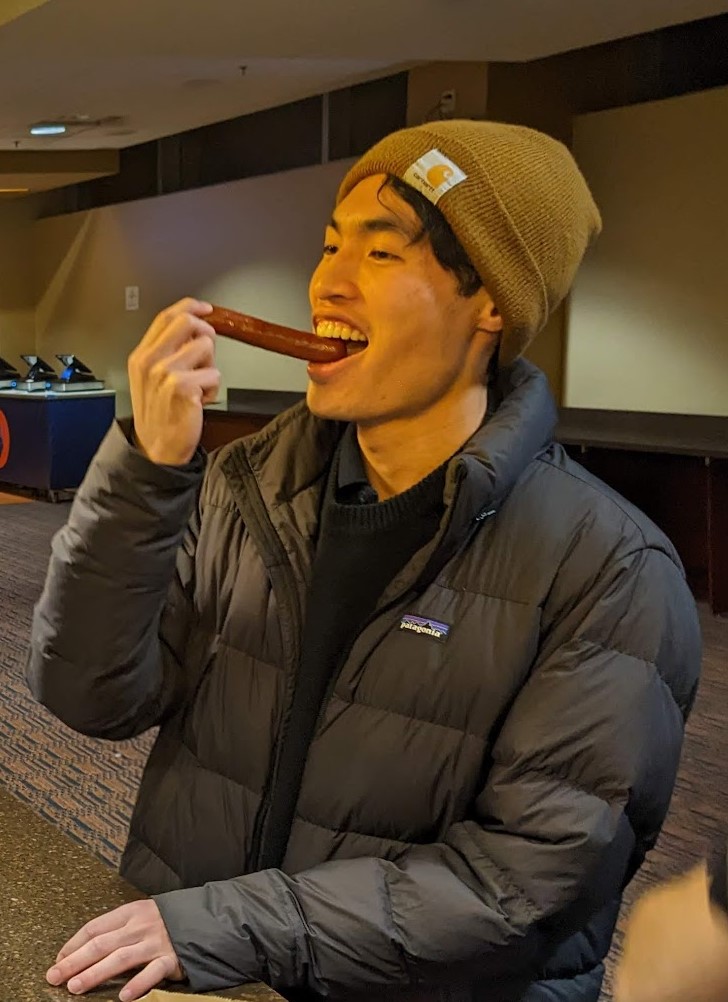Artie in Florida
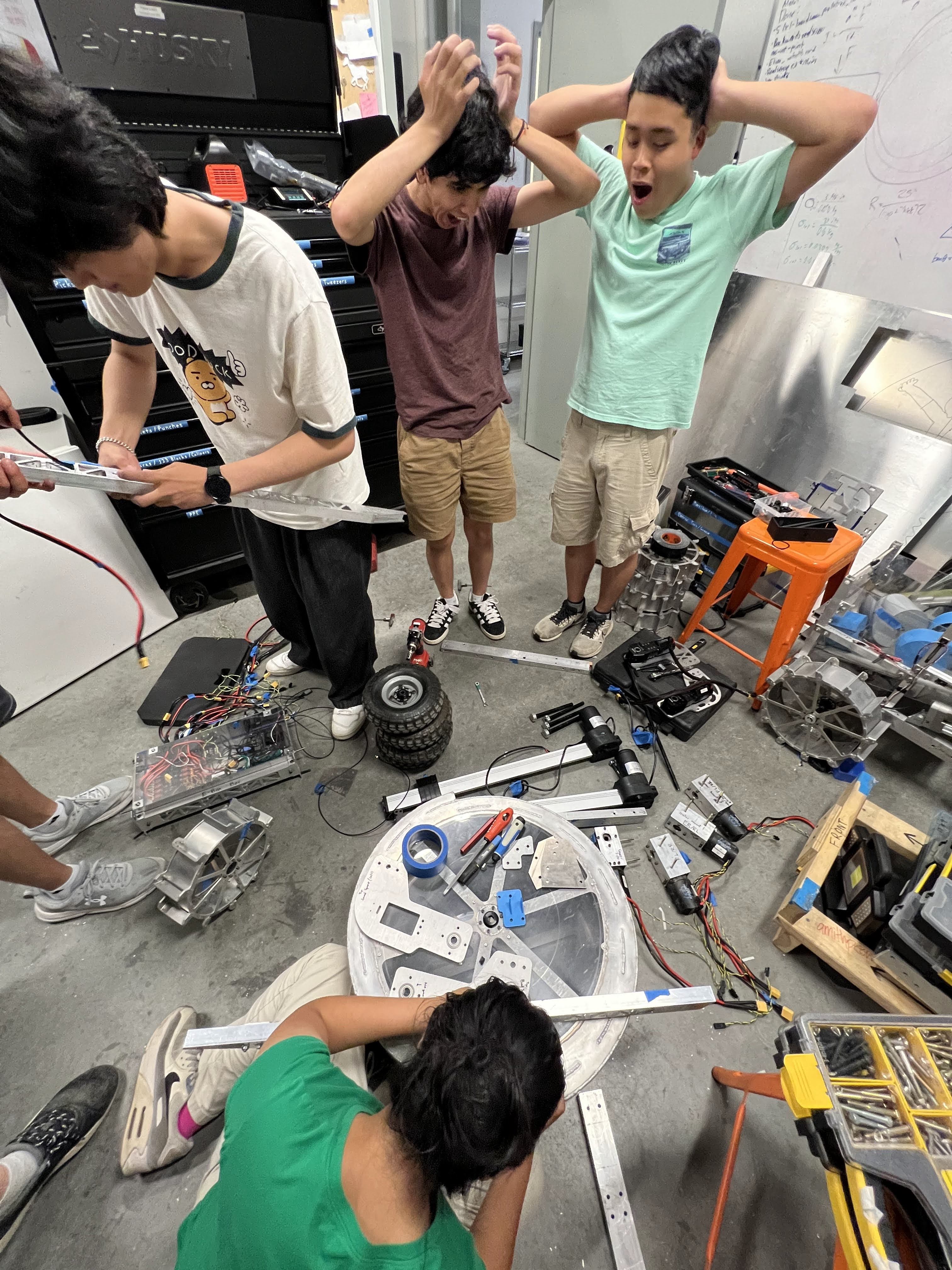
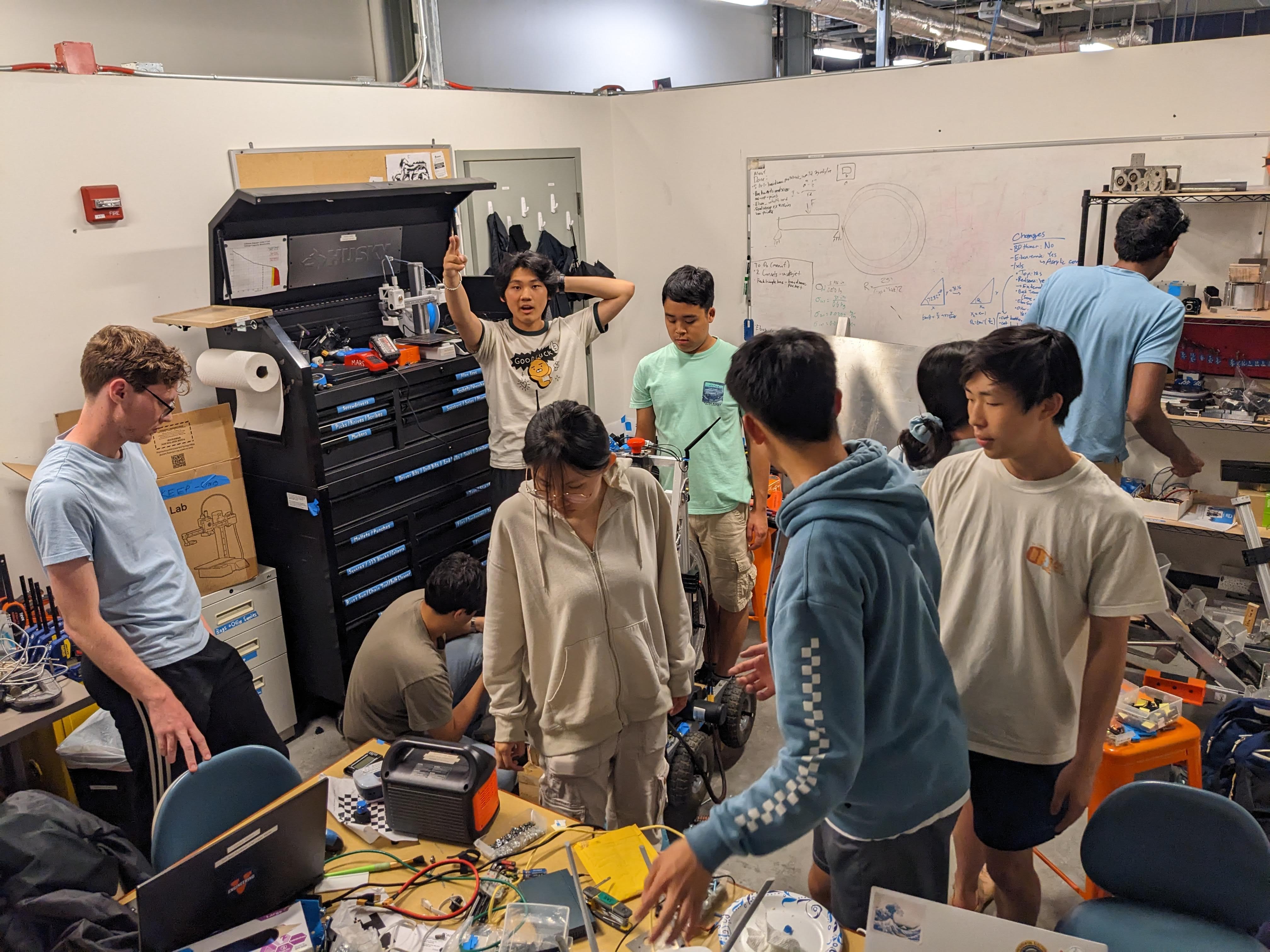
Departure (May 14)
The evening before departing for Orlando, 17 weary souls crammed into a musty project room in Lacy hall. Some were replacing broken wires, while others munched on lukewarm McNuggets (sponsor us please). All members of the competition team gathered here to make the final arrangements for departing the next morning. Some members left shortly after the meeting, but many others stayed behind to ensure the readiness of the robot before shipping it off to Florida. Up until 3am members were still 3-D printing robot parts, troubleshooting wiring issues, disassembling the robot, and packing the robot into rental cars. Eventually, everything was good to go and the remaining members made use of the few hours they had left to rest. Future computer subteam lead Eric Zeng elected to place his air mattress in an open area of Lacy Hall, where he enjoyed the company of a showering employee. At 6am in the morning, the competition team assembled outside of Lacy Hall, saying their farewells to former members of the competition team, Swedha Skandakumar and Jean Pierre Manapsal 😢. In 3 separate rental cars, they went on their merry merry way to Florida, bringing along a segmented Artie.
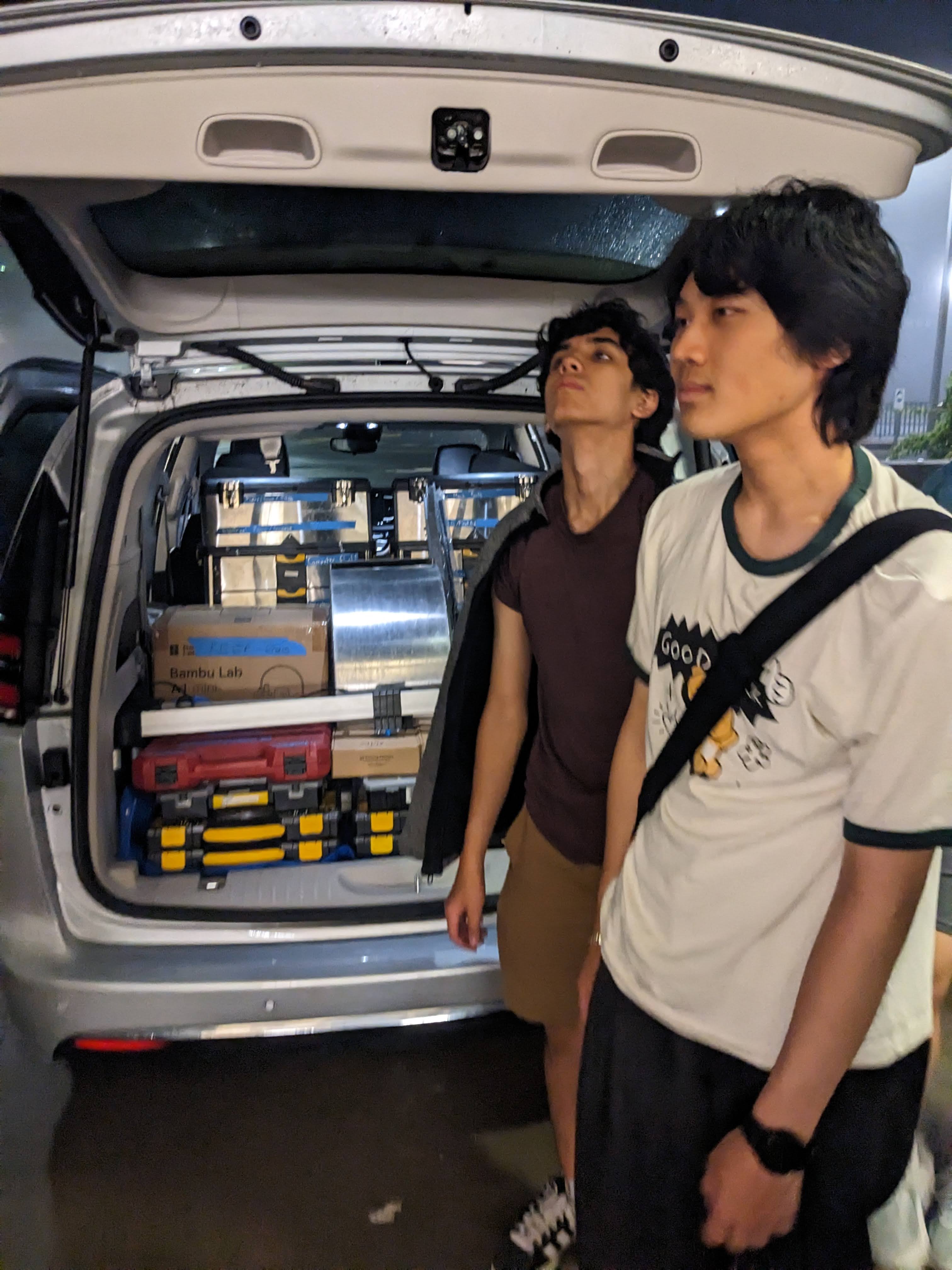
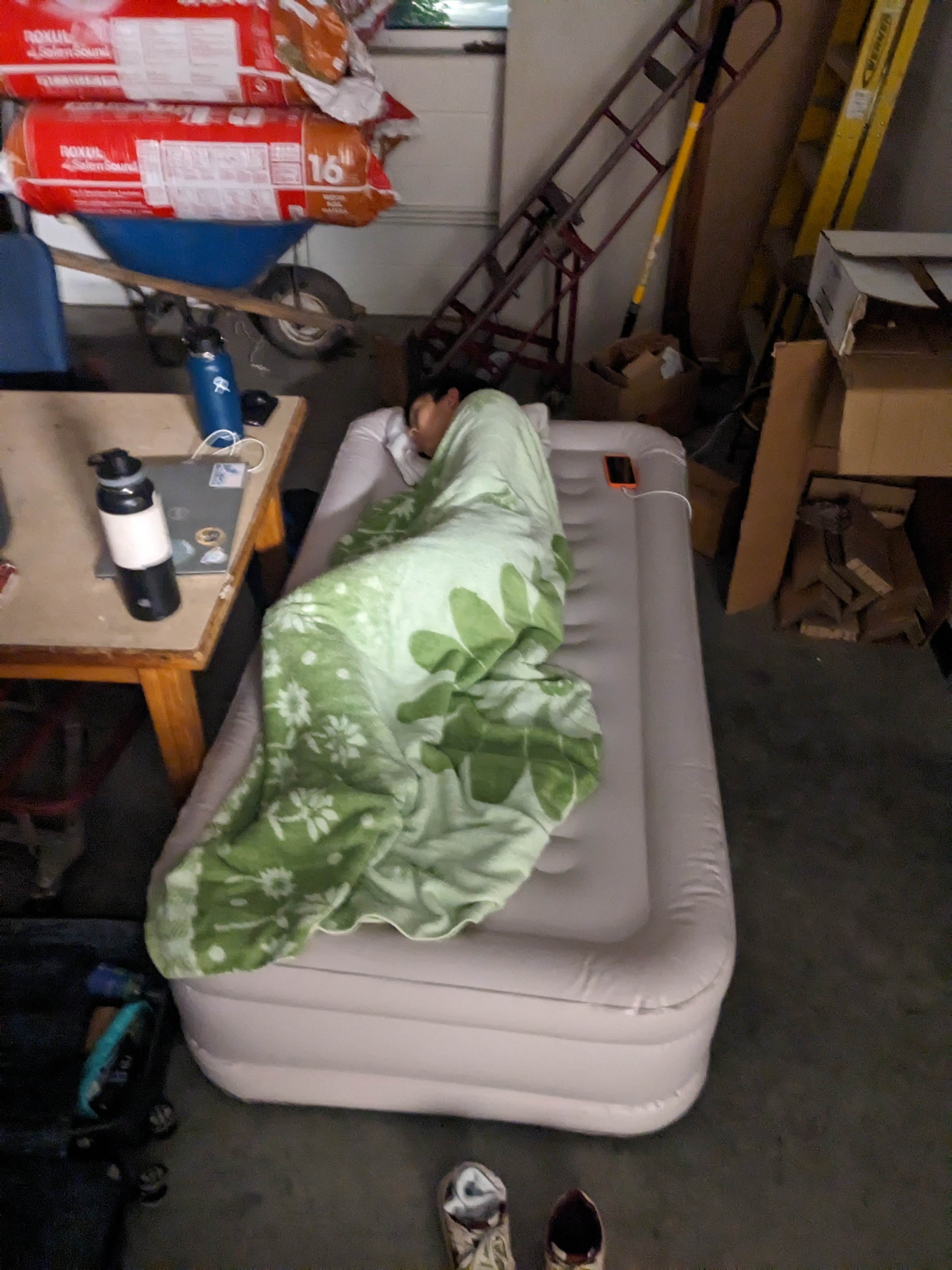
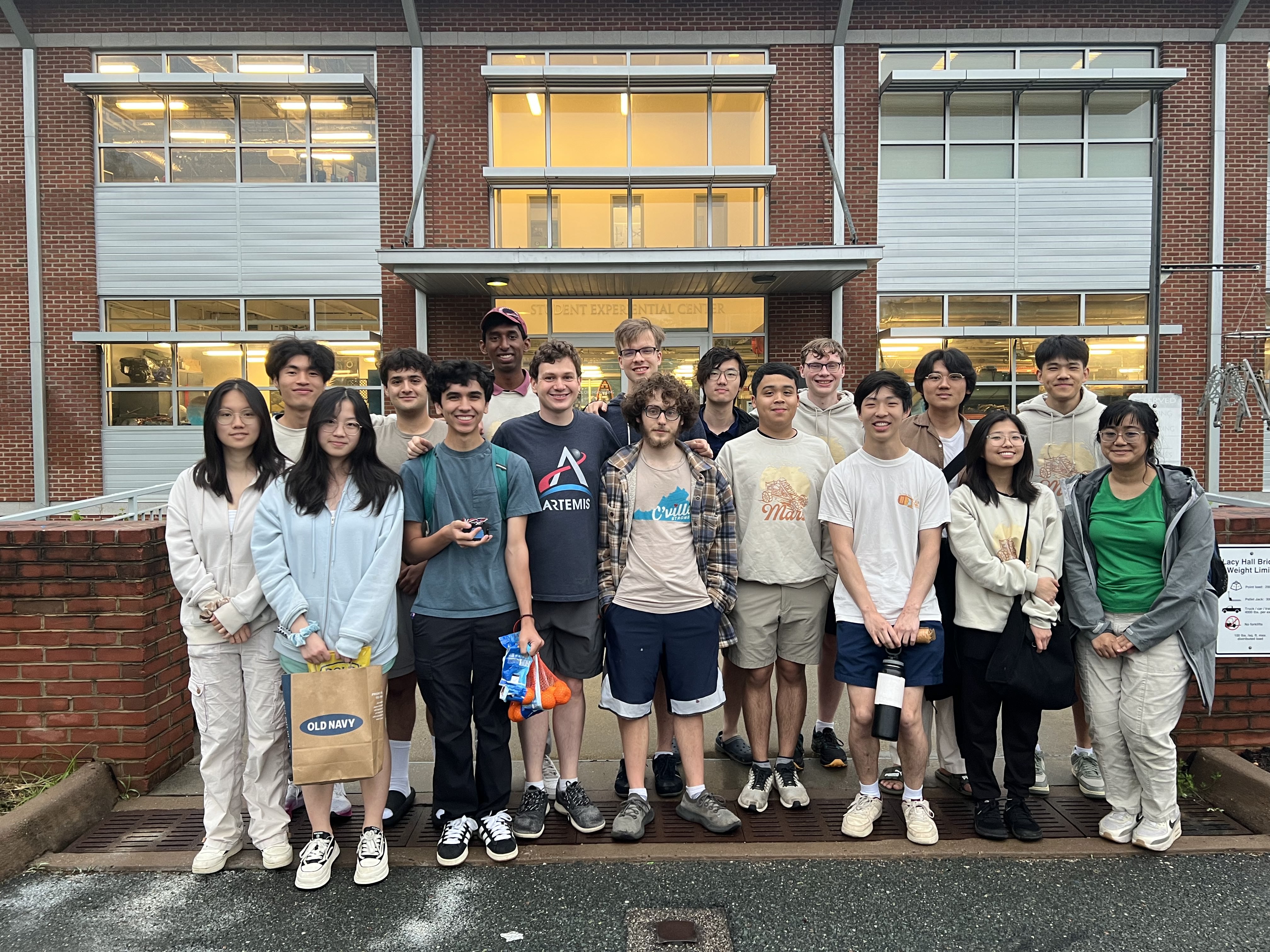
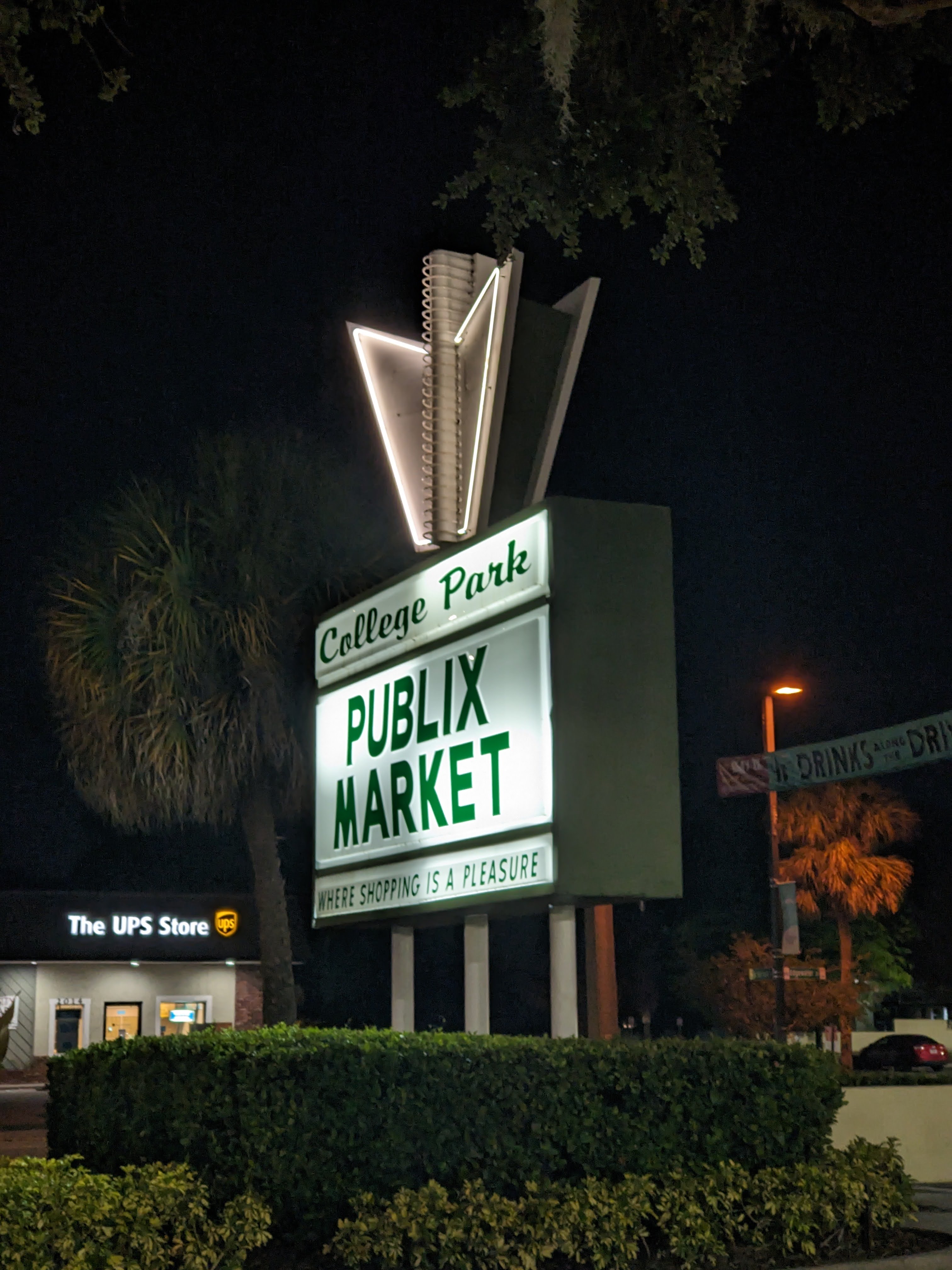
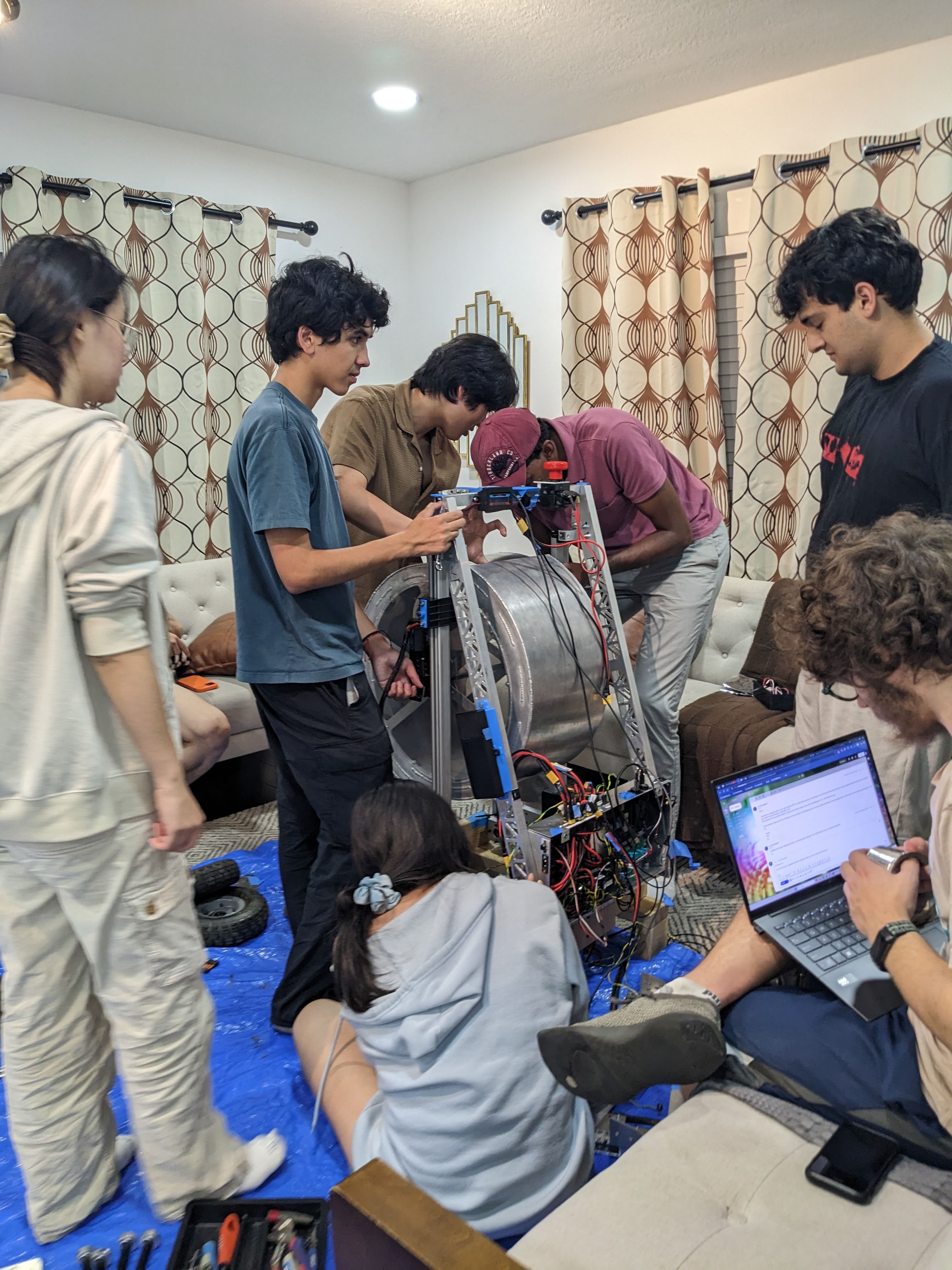
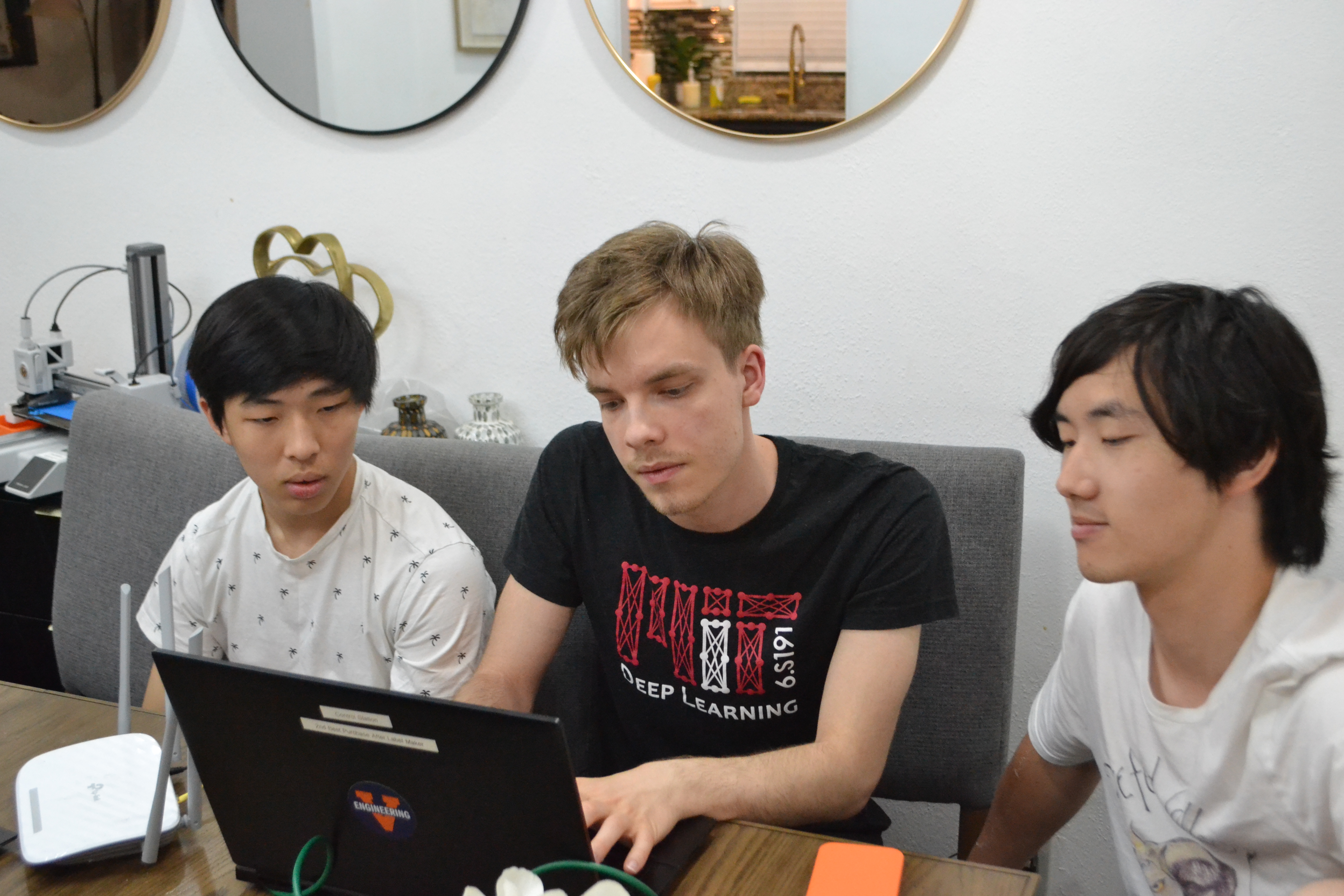
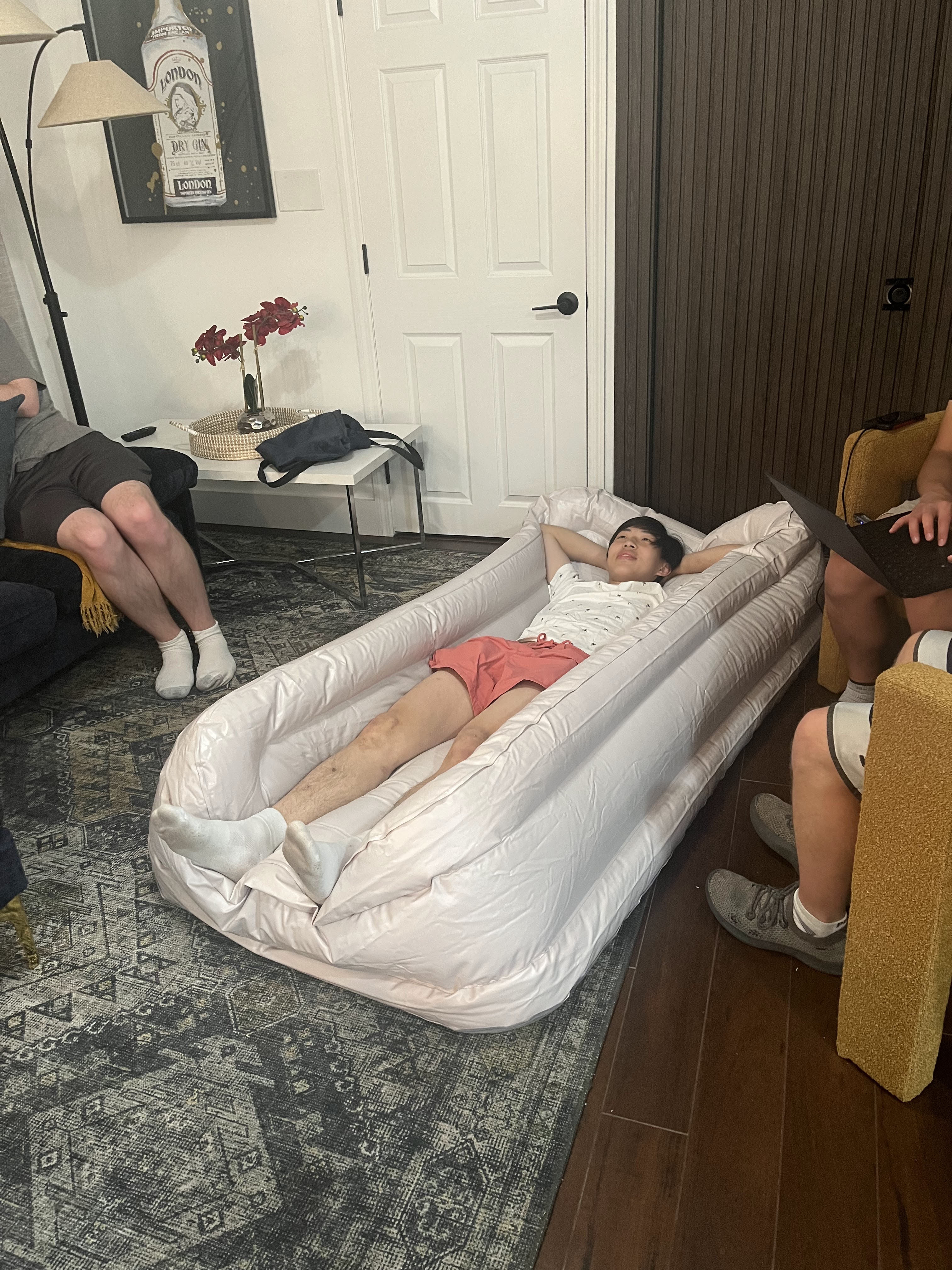
Practice Run (May 15)
Still riding off the excitement of having a functional robot with a promising design, we drove to the University of Central Florida so early that the doors to the competition venue weren’t even open. Weeks before, the wise president Craig Kalkwarf, unmatched in his desire for the team to succeed, had instilled in all of us the importance of securing a slot for the practice run, which was first come first serve. A year ago, we were unprepared and failed to get the robot to a functional state on the first day to perform a test run. This year our robot was the first out of all teams to roll into the arena. Unlike a newborn infant floundering around aimlessly in the vast expanse of their crib, Artie rolled into the regolith covered arena commanding confidence, dexterity, and a profound understanding of what it means to design it, build it, dig it. However, network issues and latency in the situational awareness cameras made it difficult to command Artie at its full potential. Meanwhile, a small group of members stayed at the Airbnb to prepare sandwiches for lunch, witnessing Artie’s first UCF performance over a youtube live stream.
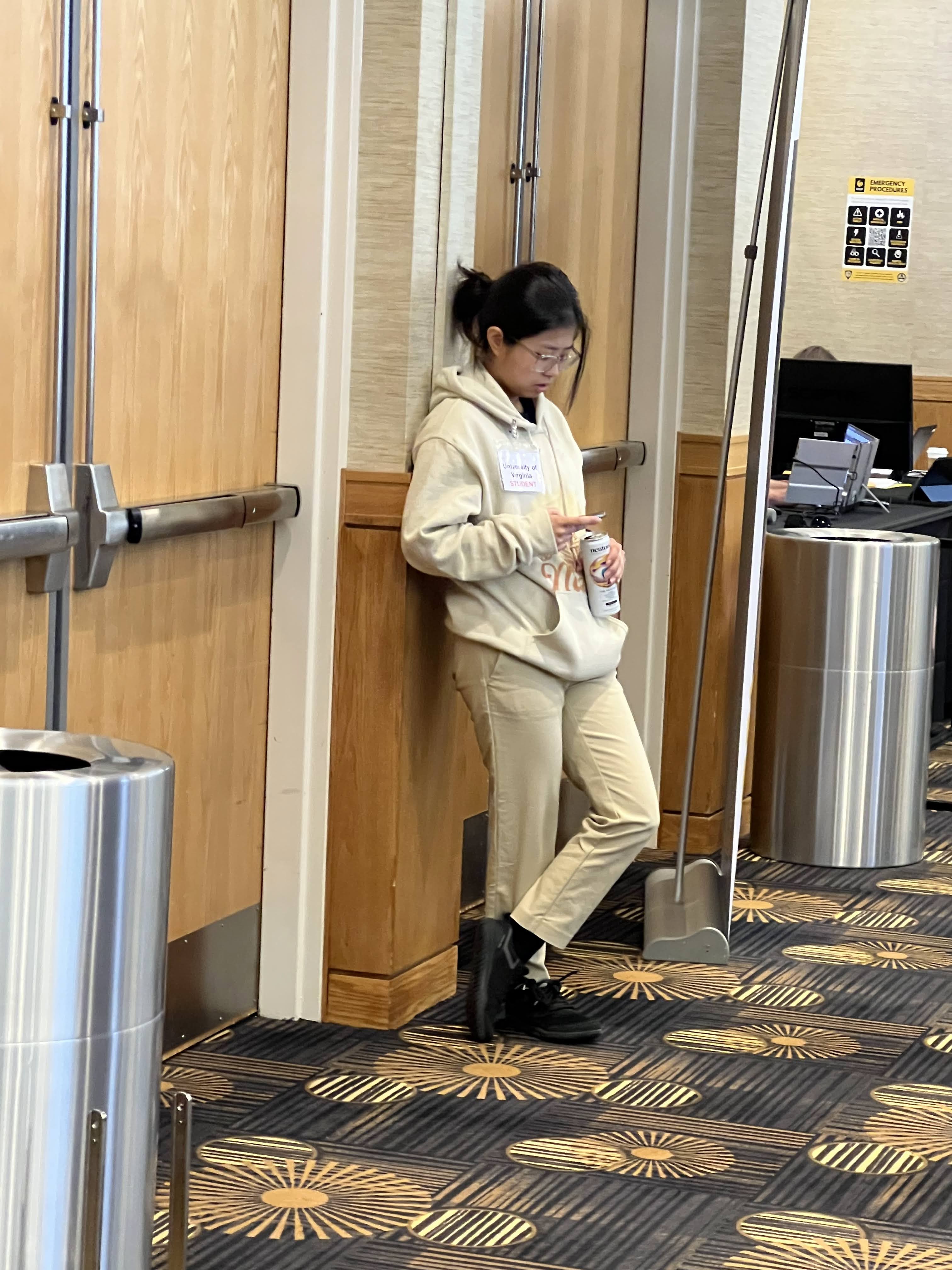
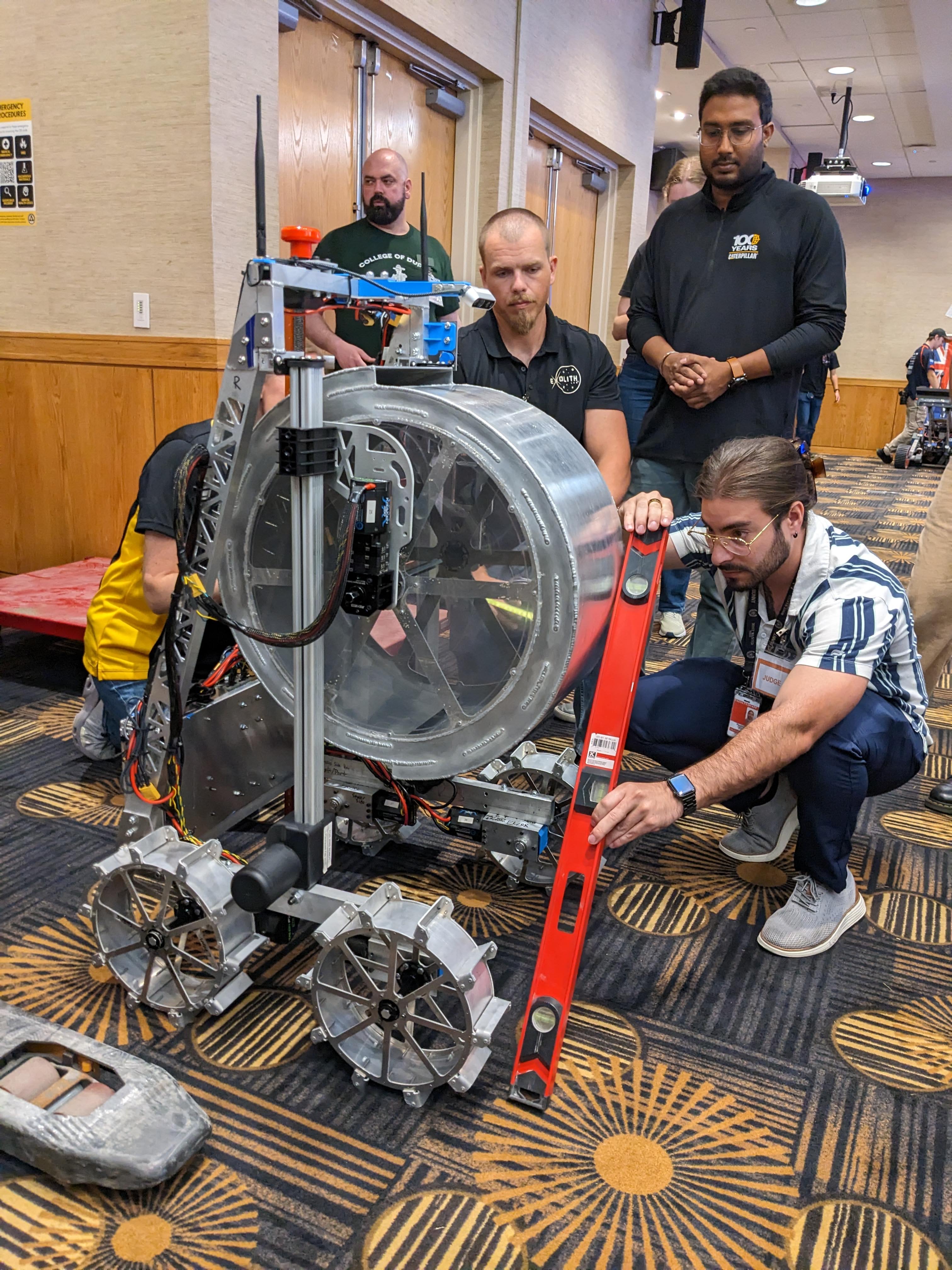

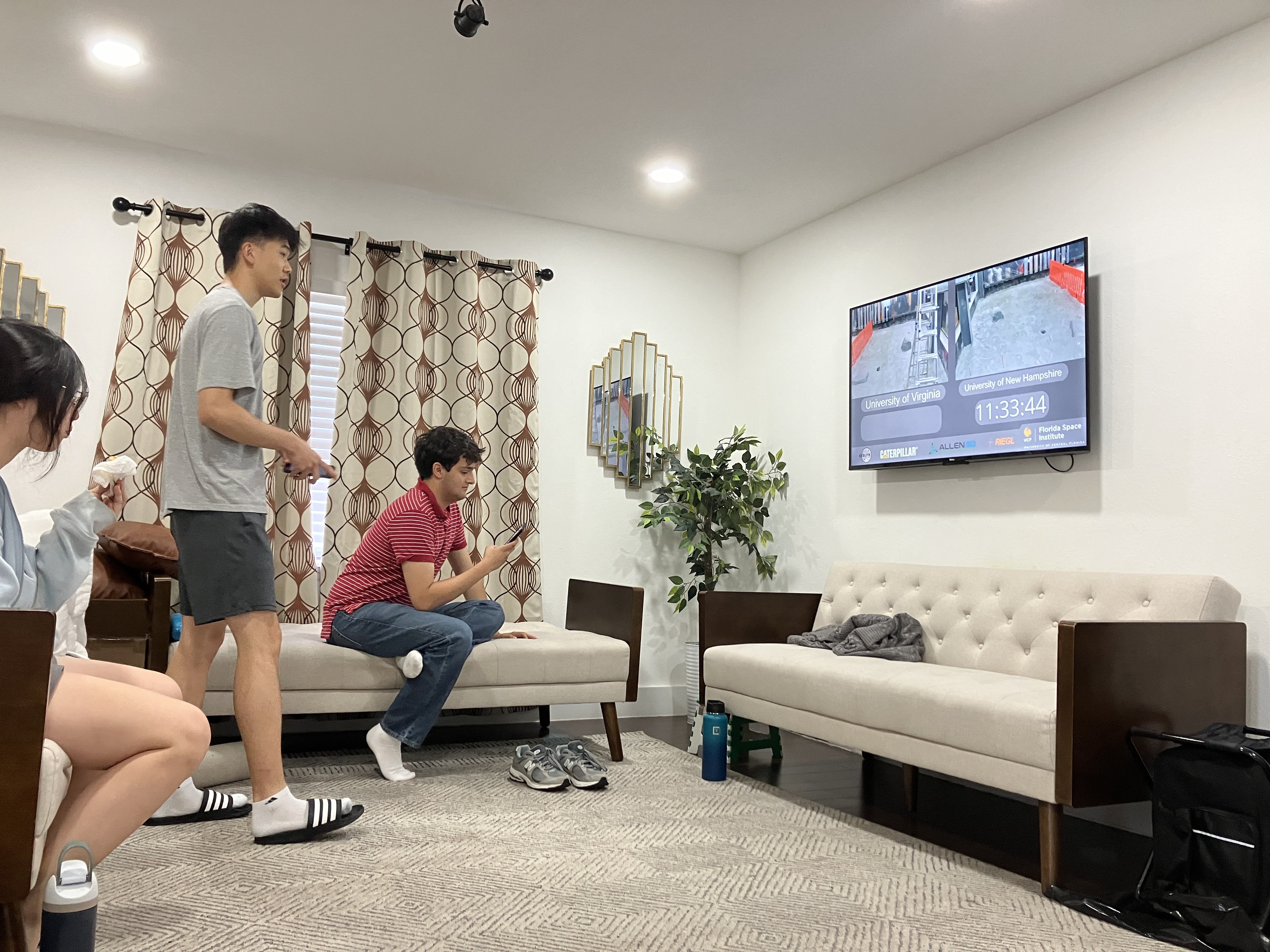
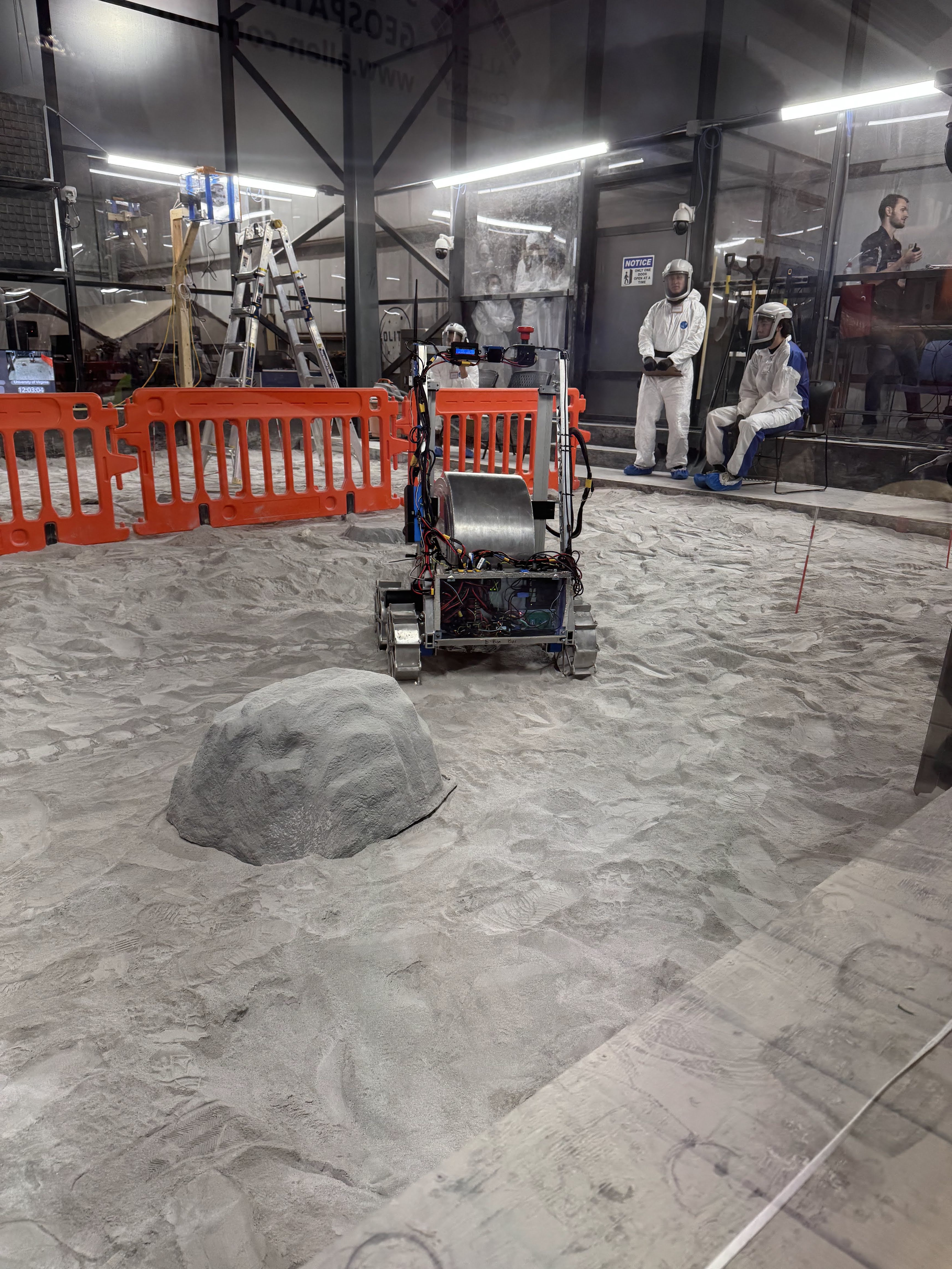
UCF Run 1 (May 17)
On this day Artie had its first competition run! The latency of the situational awareness camera was much better than during the test run, which gave us near-perfect control over the robot’s movement! Amith was a happy boy.
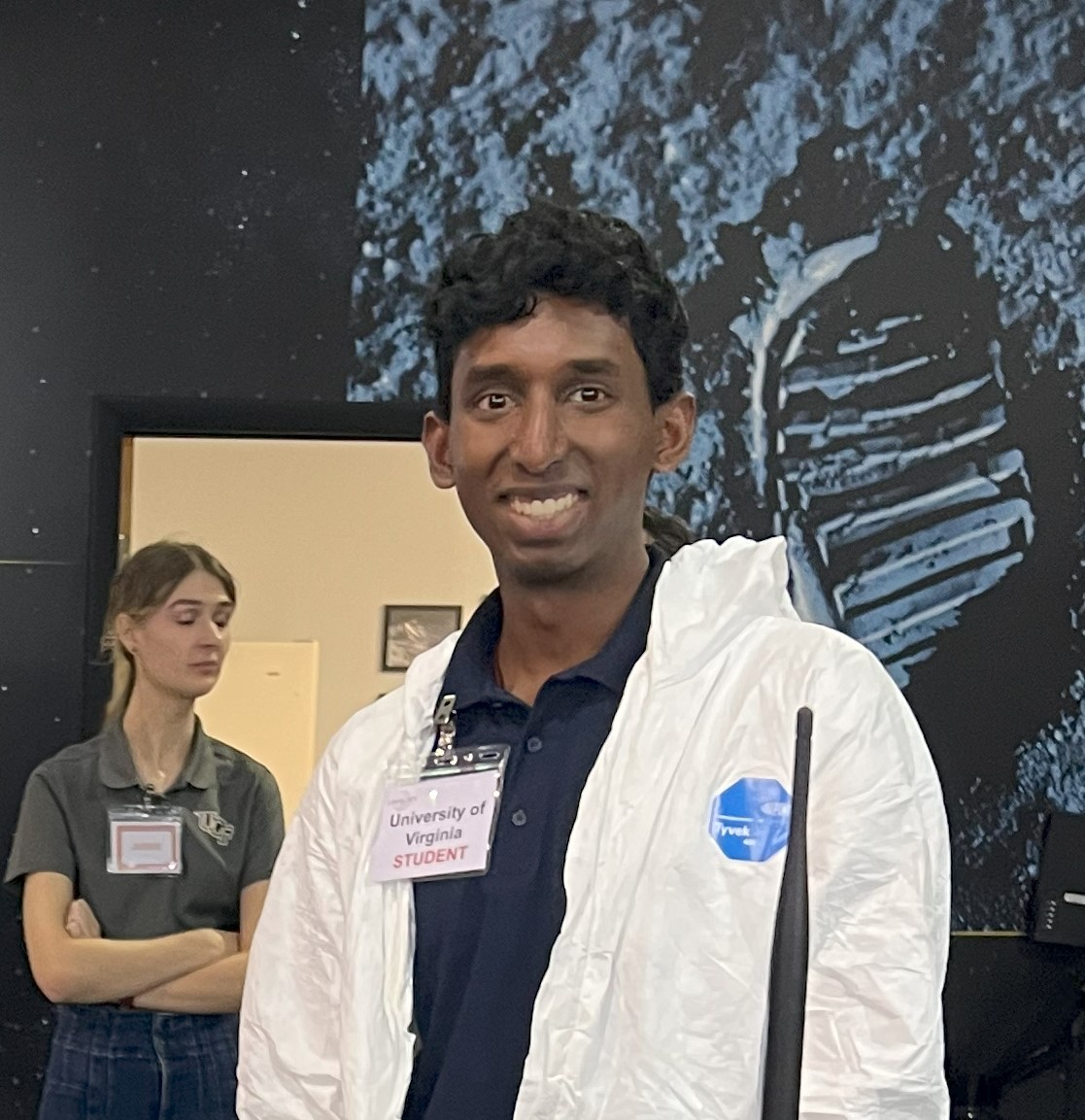
We scored third for the day, building a berm of 46L. Before the run, we made bets on how much Artie would dig, and Ben came closest with 58L! We would’ve gotten more if Zachary Parsia, mechanical team member, didn’t step on it 🙁 The robot needed habitual maintenance to perform at the highest level – we torqued down some screws and bolts on motor mounts and actuators since they’re loosening. We had a very long debrief of the first run that night in the living room. I (austen) recall it being very hot and very boring. It was so long that the debrief notes ended up being 22 pages long.
UCF Run 2 (May 18)
Artie finished its second competition run! We felt good going into the UCF awards ceremony. As Zachary Parsia posed as Ben Cohen in Ben’s iconic bucket hat and checkered jacket to accept the first place award in the Cat Command Challenge, we were intoxicated in joy. Notably, president Craig Kalkwarf and future mechanical lead Christopher Lim were also among the top 5 finishers in the Cat Challenge.
Then they started announcing the 10 teams that qualified for the final stage of the competition. I could almost hear the heart of Zachary Parsia, no longer disguised as Ben Cohen, sink deeper and deeper as the teams were named, one by one starting from first place. By the time we heard “7th place, University of Utah”, I could see beads of sweat forming on Zach’s forearms. Regardless, we clapped on, congratulating all the teams that made it. But then, in a twist of fate nobody foresaw, there it came: “8th place, University of Virginia”. Sighs of relief were exuded around me as Zach morphed back into Ben. At that moment, we were simply grateful to have the opportunity to show more of our robot. But nothing would have prepared us for the things that went down that night, when Craig revealed his true nature.
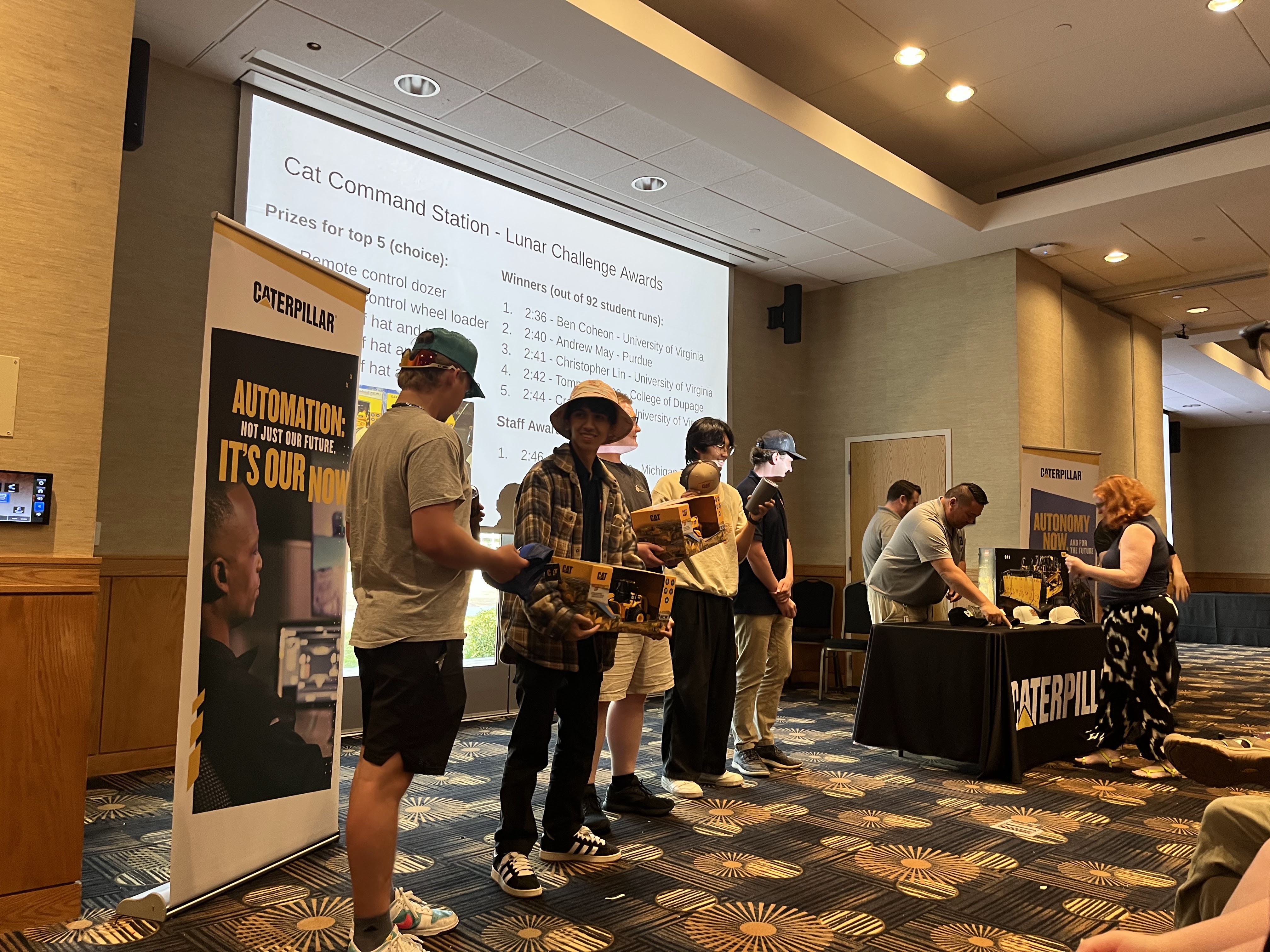
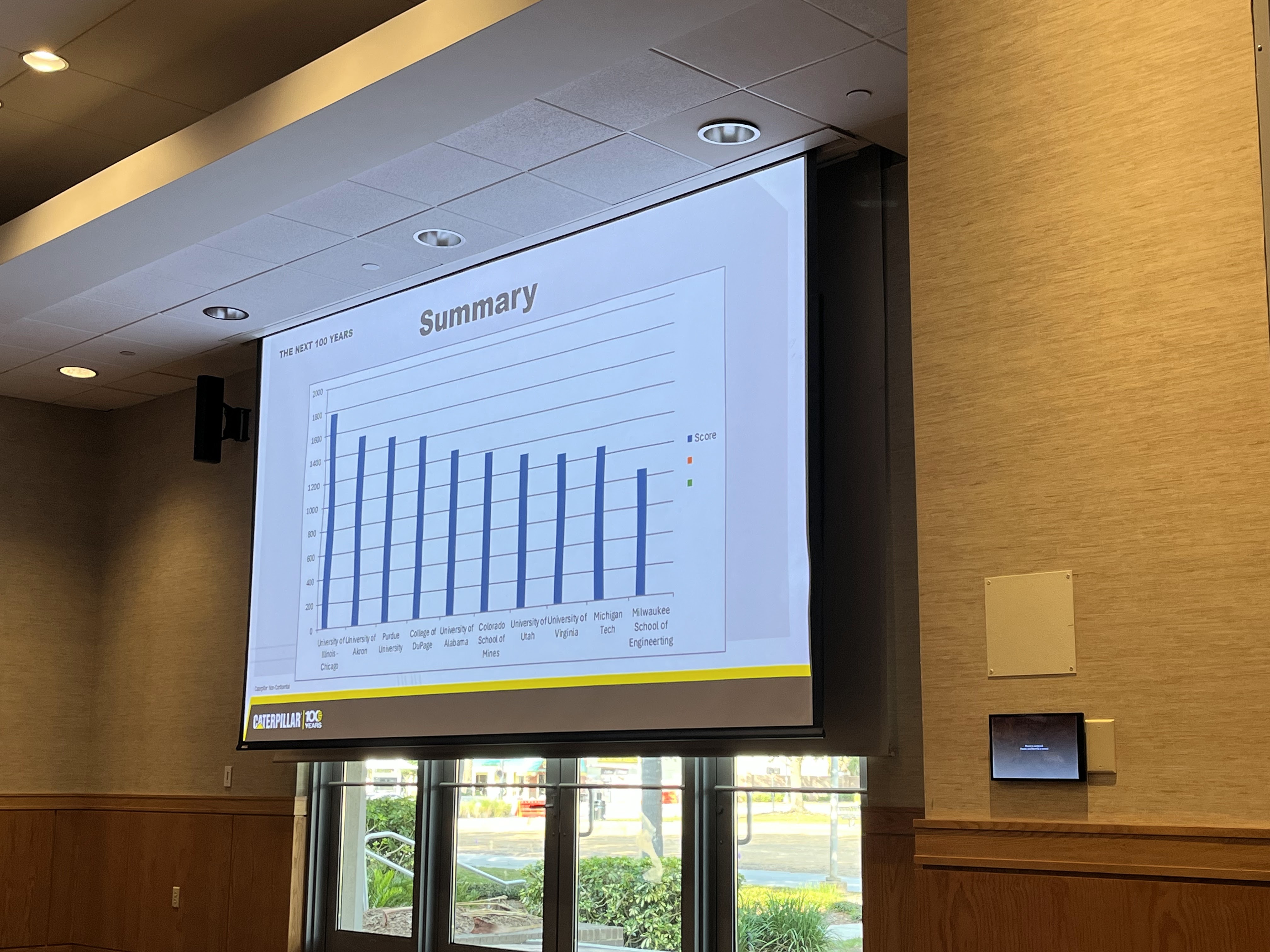
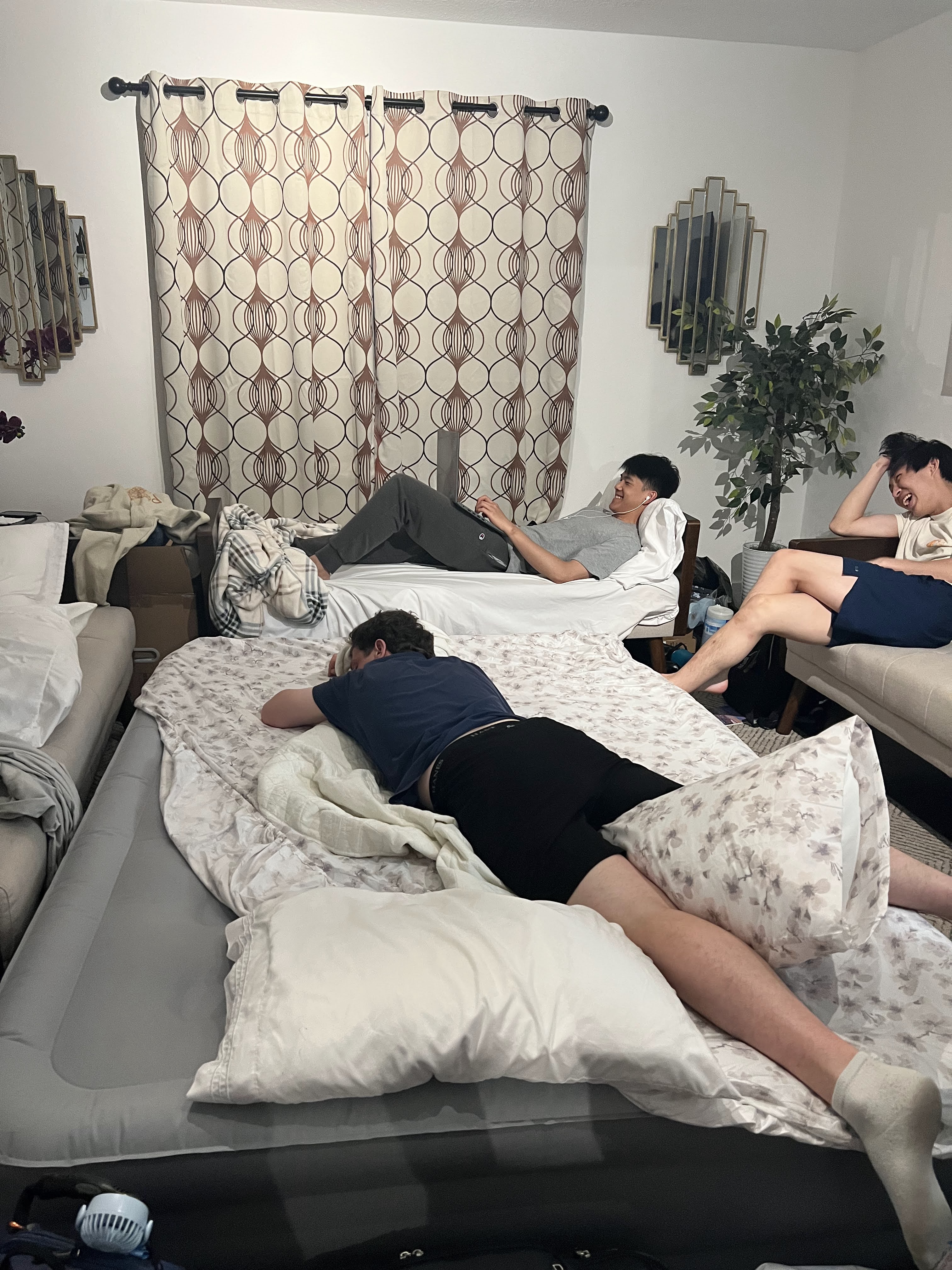
Vacation (May 19)
We had a day off between the UCF and KSC stages of competition! Some of us went to the beach and got sunburnt. Others went to play mini golf and eat Italian ice.
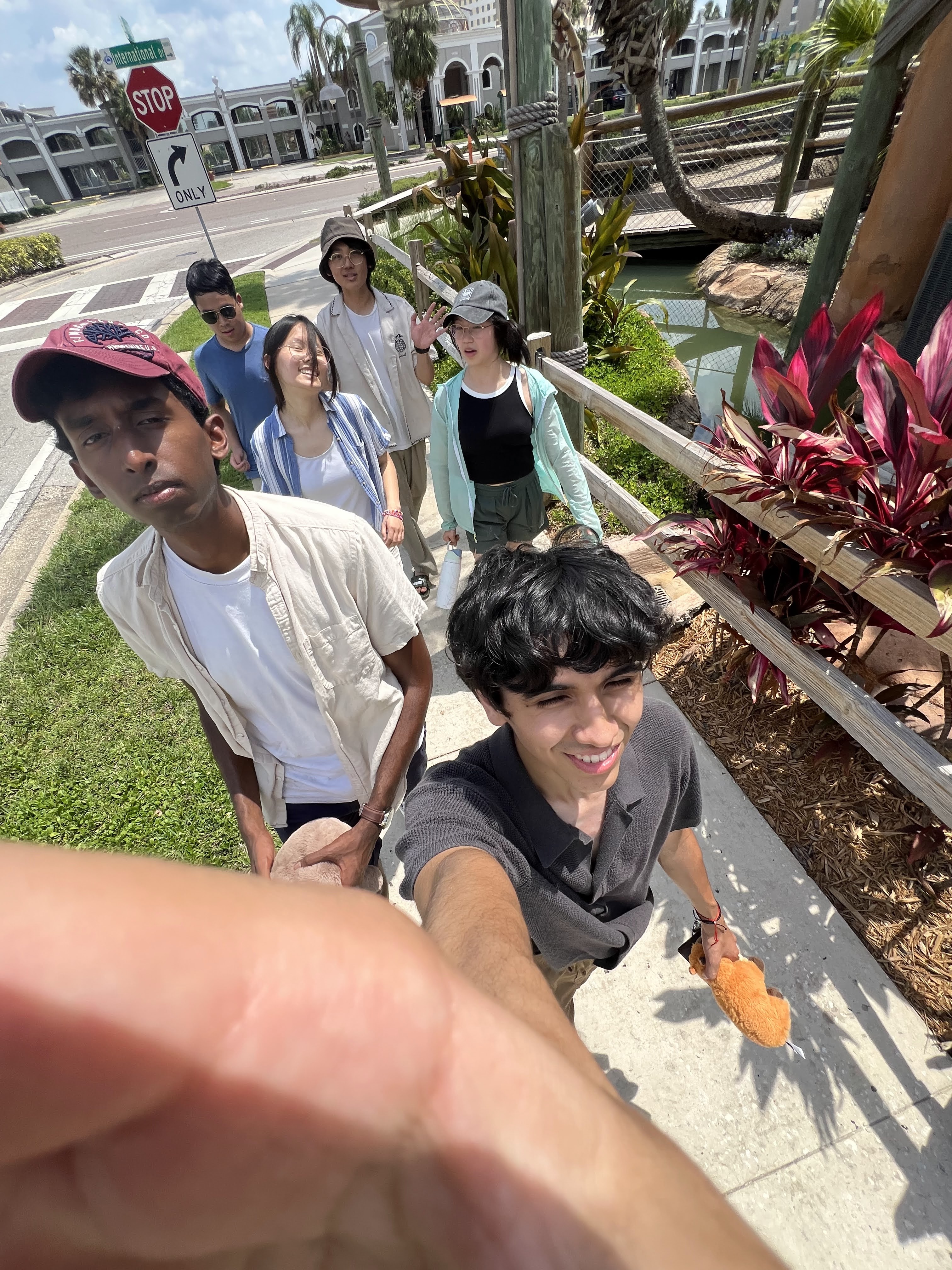
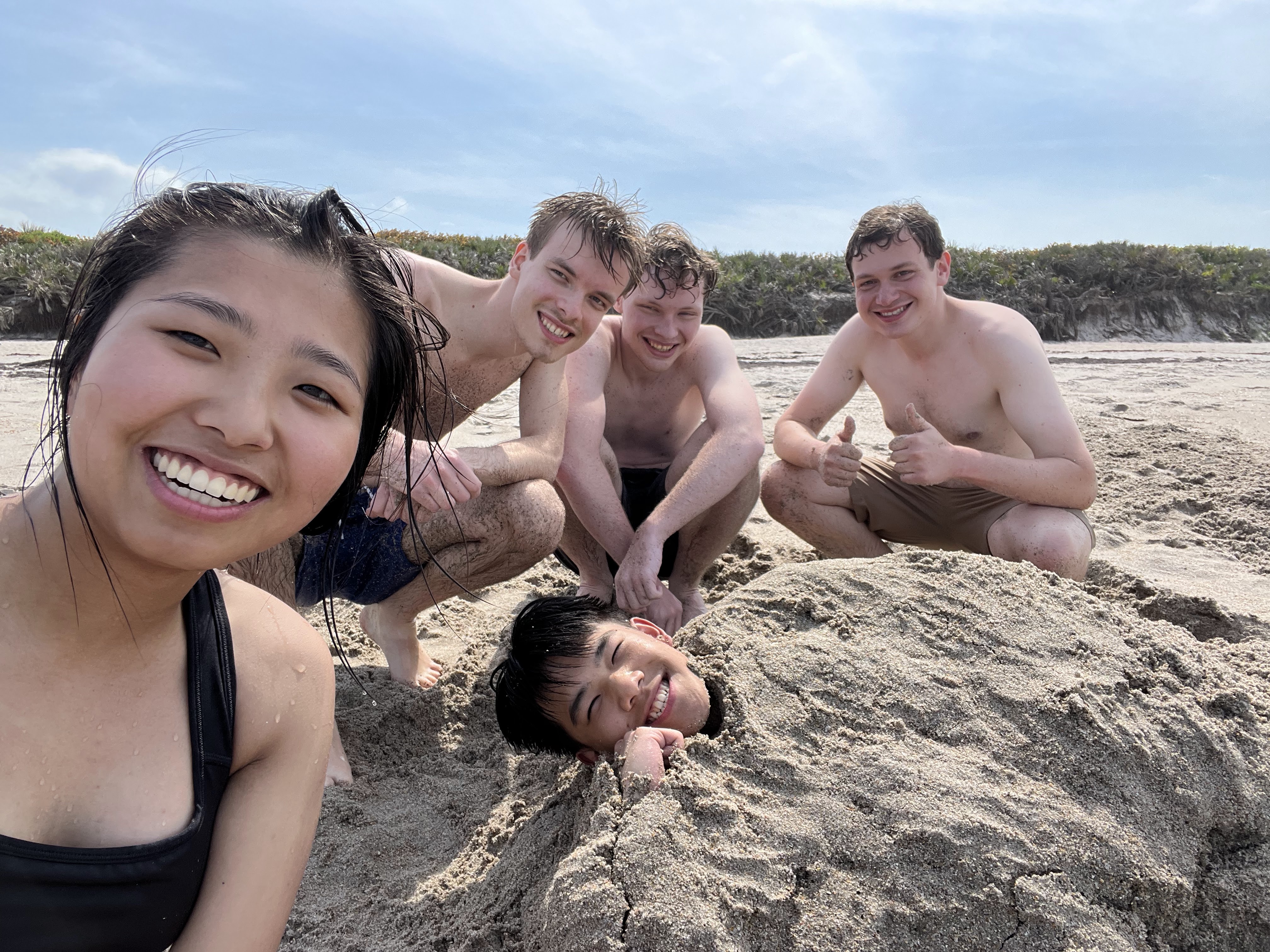
KSC Run 1 (May 20)
A breathtaking visitor center complex at the Kennedy Space Center awaited the top 10 teams that emerged from the UCF qualifiers. At the pits, we made small improvements to our robot like applying aluminum tape to the gaps of the bucket drum while engaging in friendly conversation with NASA staff, CAT employees, and students from other colleges. The scale of the competition was larger than ever, with live feeds of the pits at all times and inside the control room during competition runs. Artie gave a convincing performance in its first run at KSC, despite struggling a bit more to dig up the BP-1 regolith simulant used at KSC compared to the LHS-2E simulant used at UCF. After the run, we were shown a 3-D volumetric scan of the berm Artie built, showing 3 large piles of regolith. Throughout the day, we attended various talks including a systems engineering seminar, a talk given by Honeybee Robotics, and a presentation from the Australia’s University of Queensland’s robotics team. The day ended on a high note with us receiving 2nd place for our STEM Engagement paper. I want to give a big hug to our charming outreach chairs Michael Chesterman and Jordan Ho for all the effort they put into organizing outreach events this year, culminating in an unprecedented achievement!
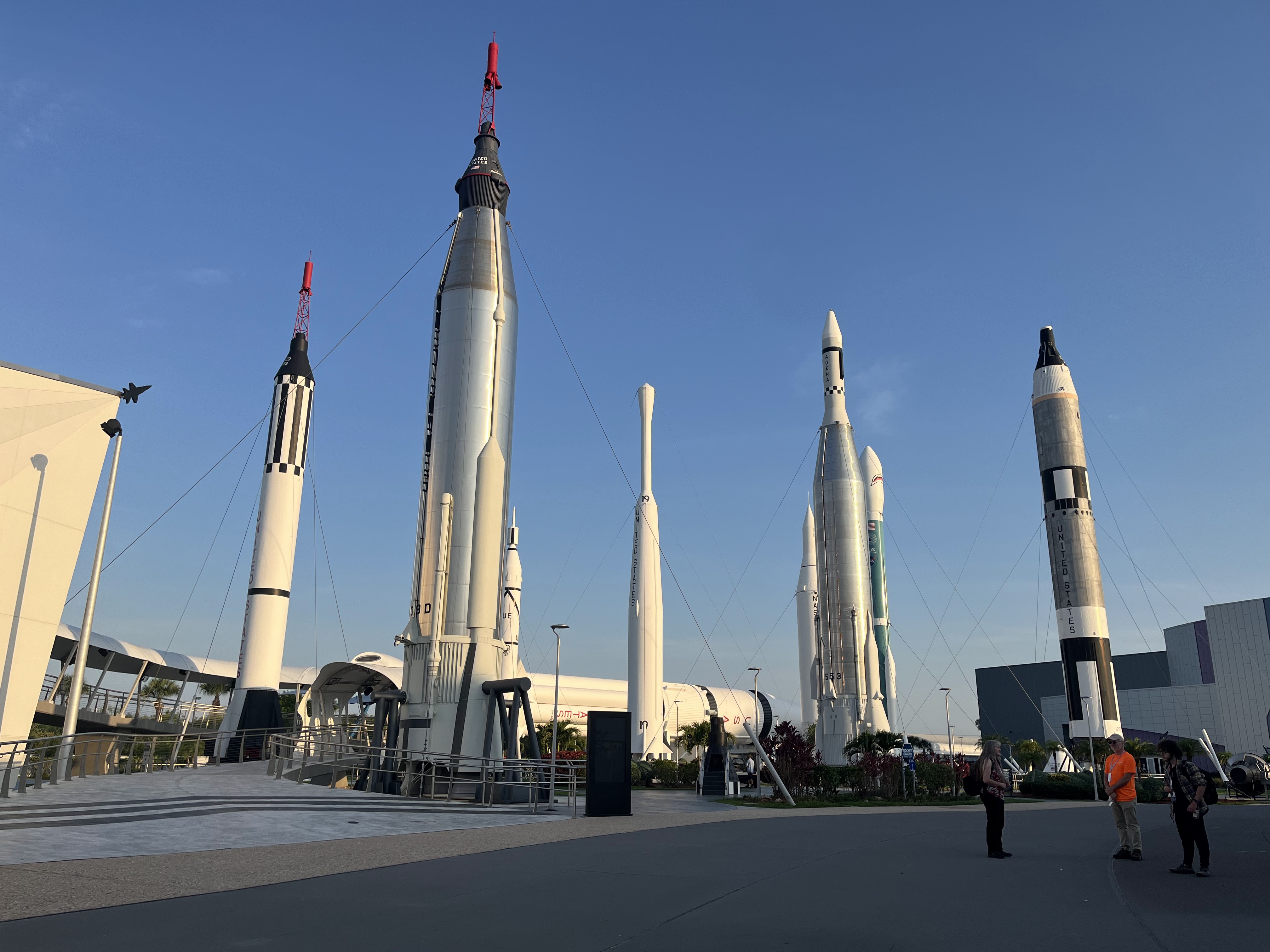
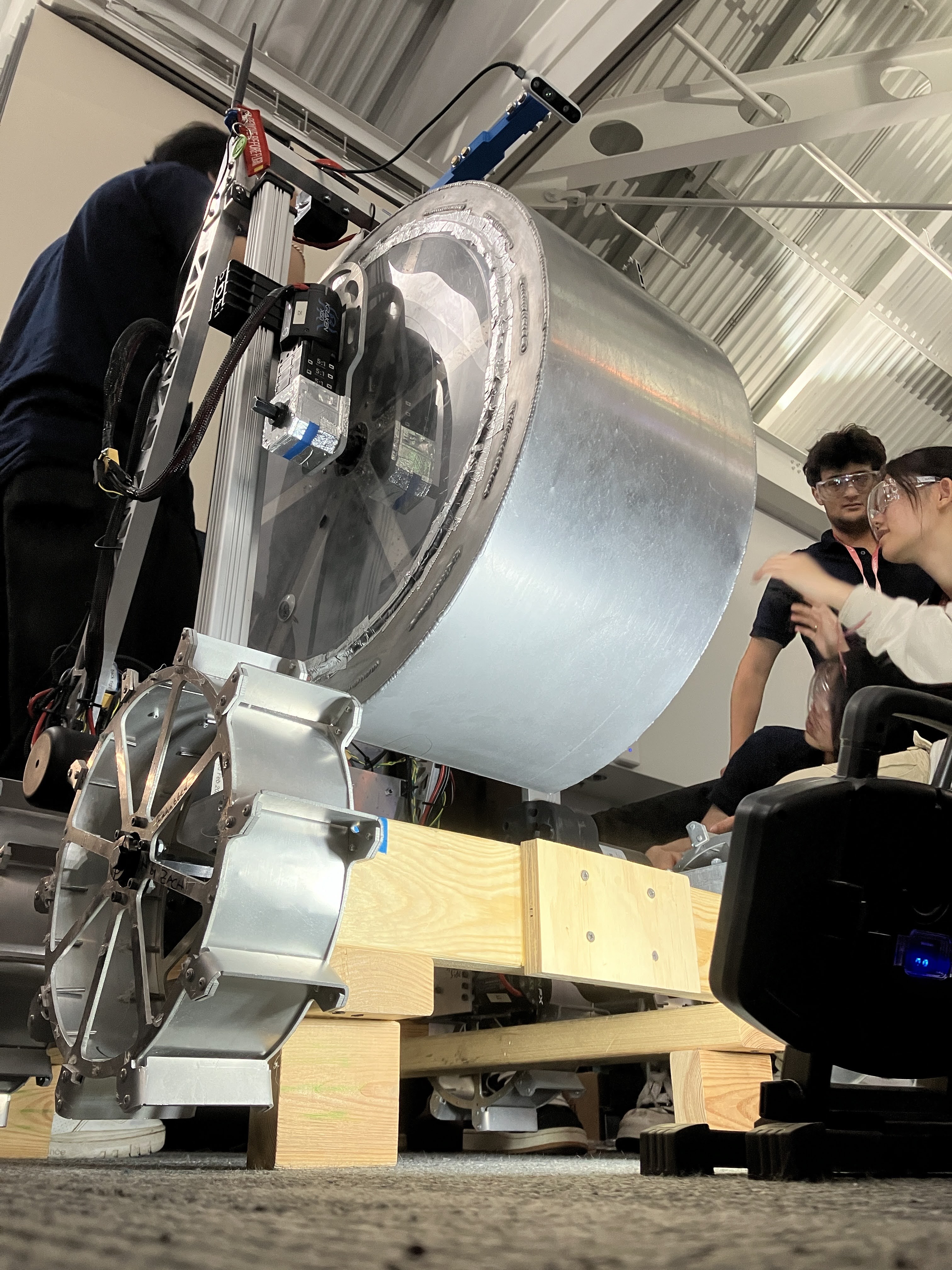

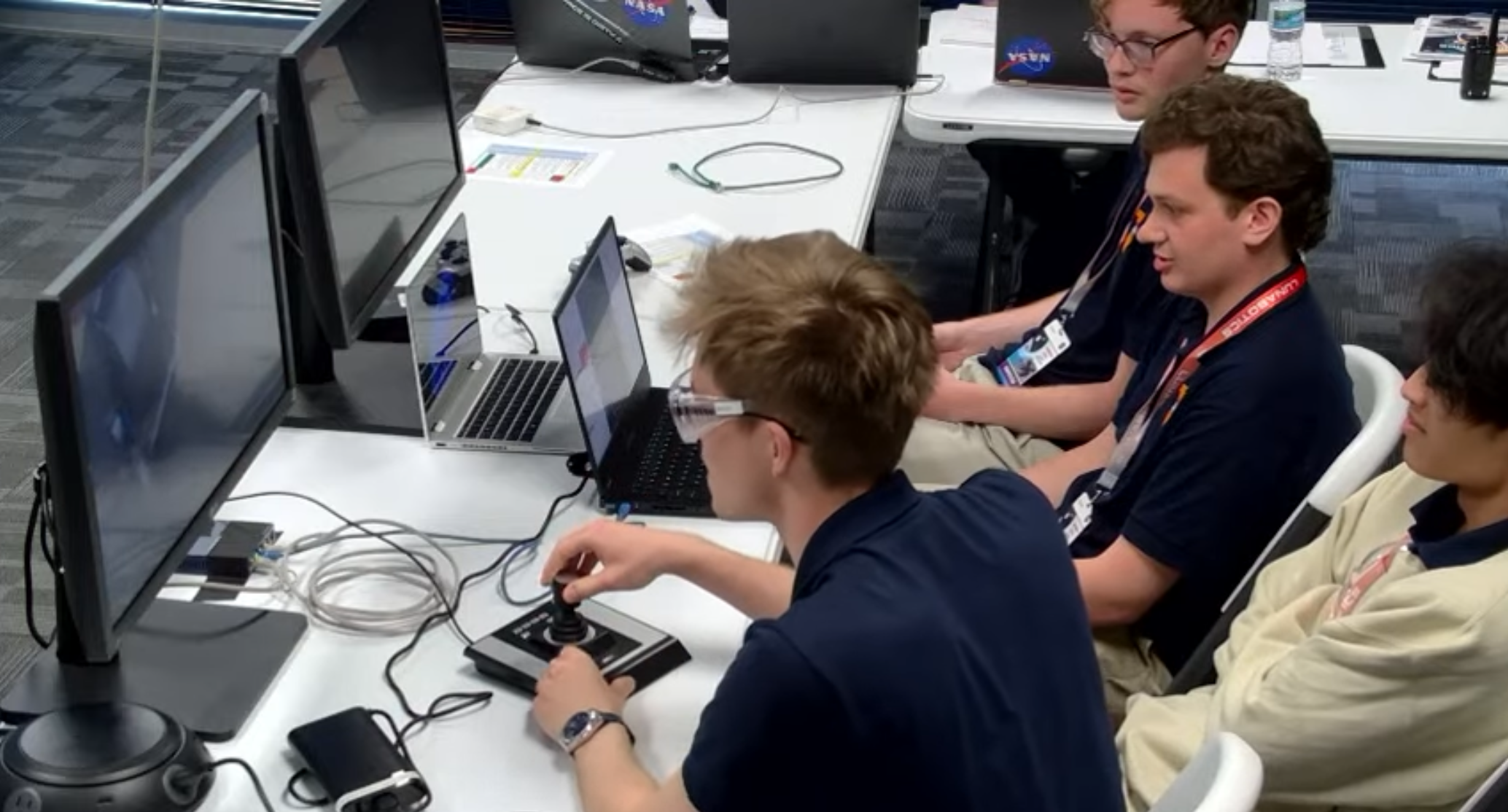

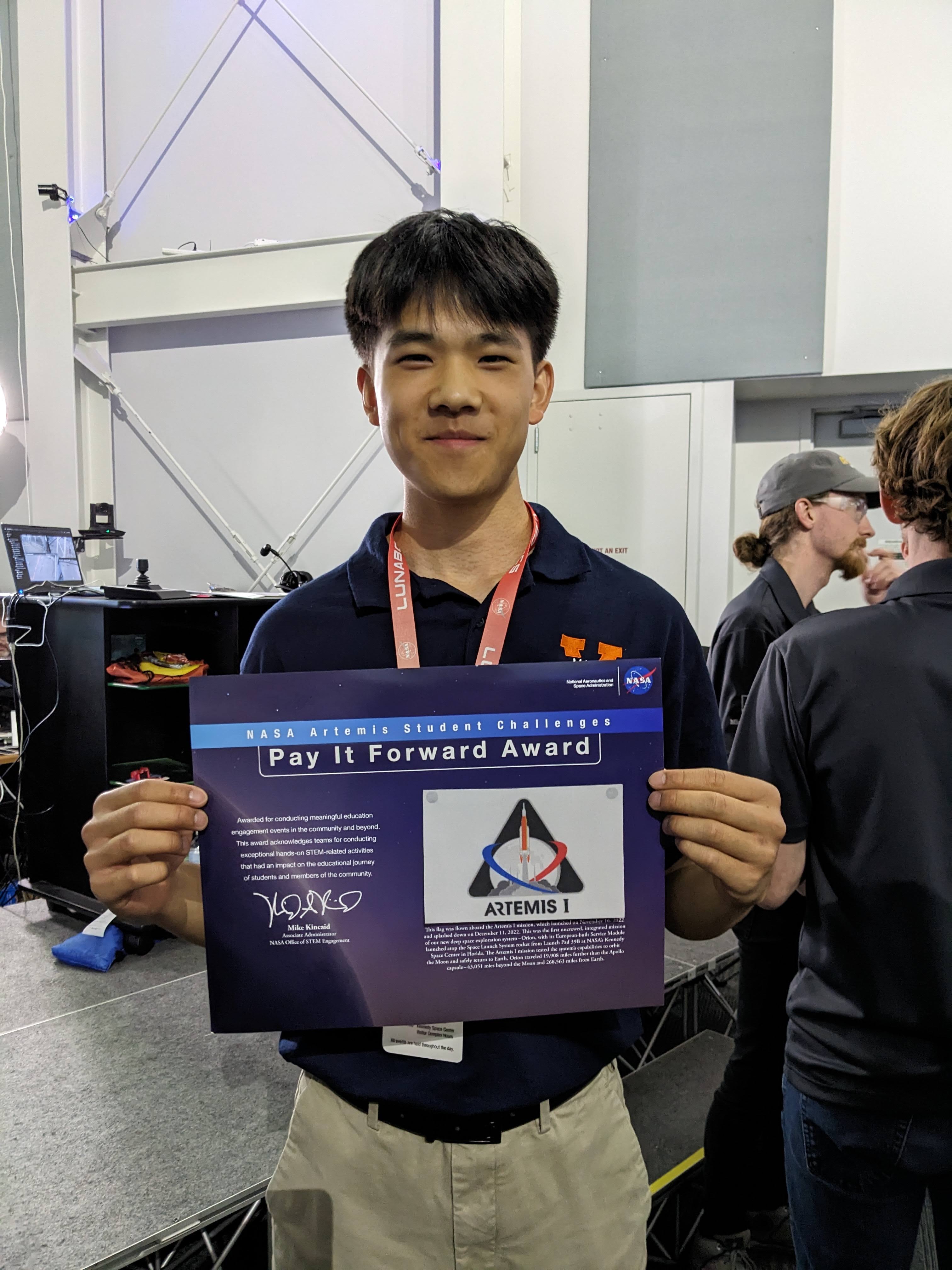
KSC Run 2 (May 21)
By day 2 of KSC the visitor complex already felt like home. People were sleeping on the floor and eating bananas. There was a small hiccup before the second run. Some rocks appeared to be stuck in the opening of the bucket drum. How the mechanical people got the rocks out I have no idea, but we made sure Artie’s bucket drum was nice and empty before heading out for its second run. If you fell asleep while watching the first run you certainly would not have during the second run. Near the end of our run Artie drove into a humongous crater. For the longest minute of his life, robot operator Craig Kalkwarf maneuvered the robot in different directions, but any kind of movement only exacerbated the chances of tipping. It looked like all hope was lost until the robot launched itself out like a 240-pound silverback gorilla in its natural habitat. Everyone cheered. Viewers at home clapped. To celebrate our robot making it out of the competition in one piece, Treasurer Eric Paschke and Computer Subteam lead Mikhail called their families on their banana phones in one of the most emotional, heartwarming moments I’ve witnessed in my lifetime. We were also awarded 2nd place for our systems engineering paper! The recognition was well deserved for Hao Gu, the Systems lead who revolutionized the role of systems engineering at MARS. He celebrates with good friend Cayla Celis, who paved the way as the first ever Systems lead.
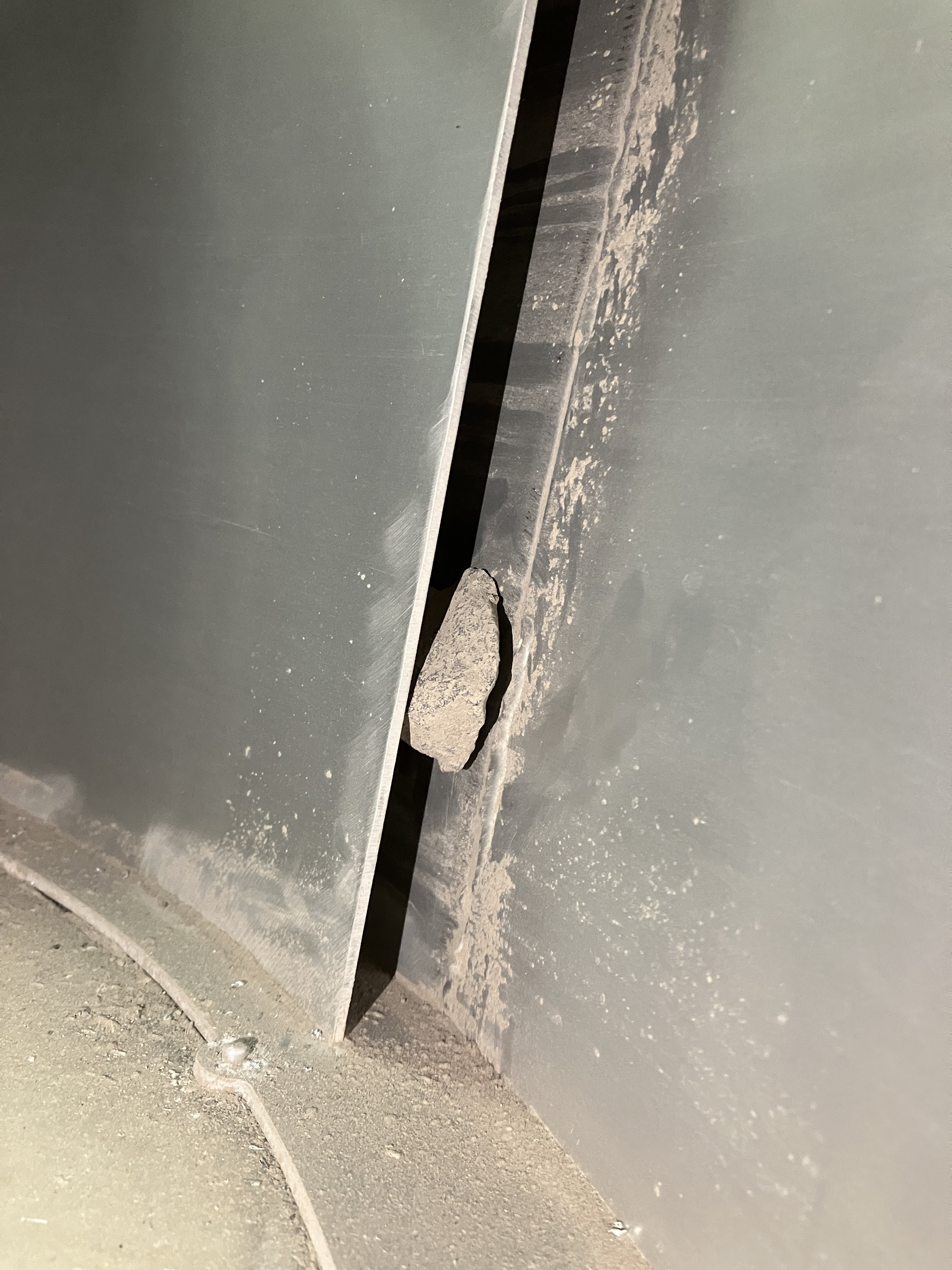
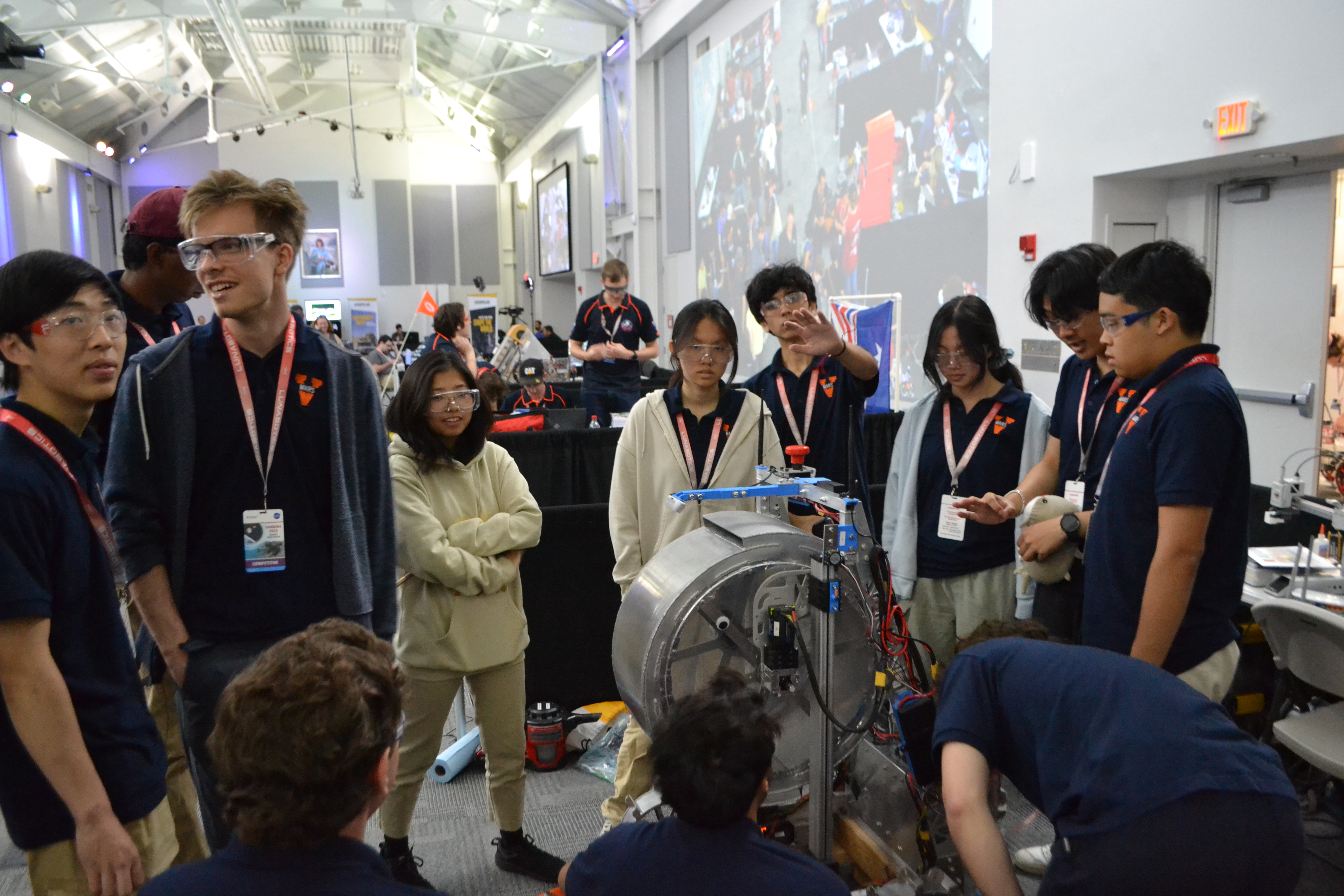
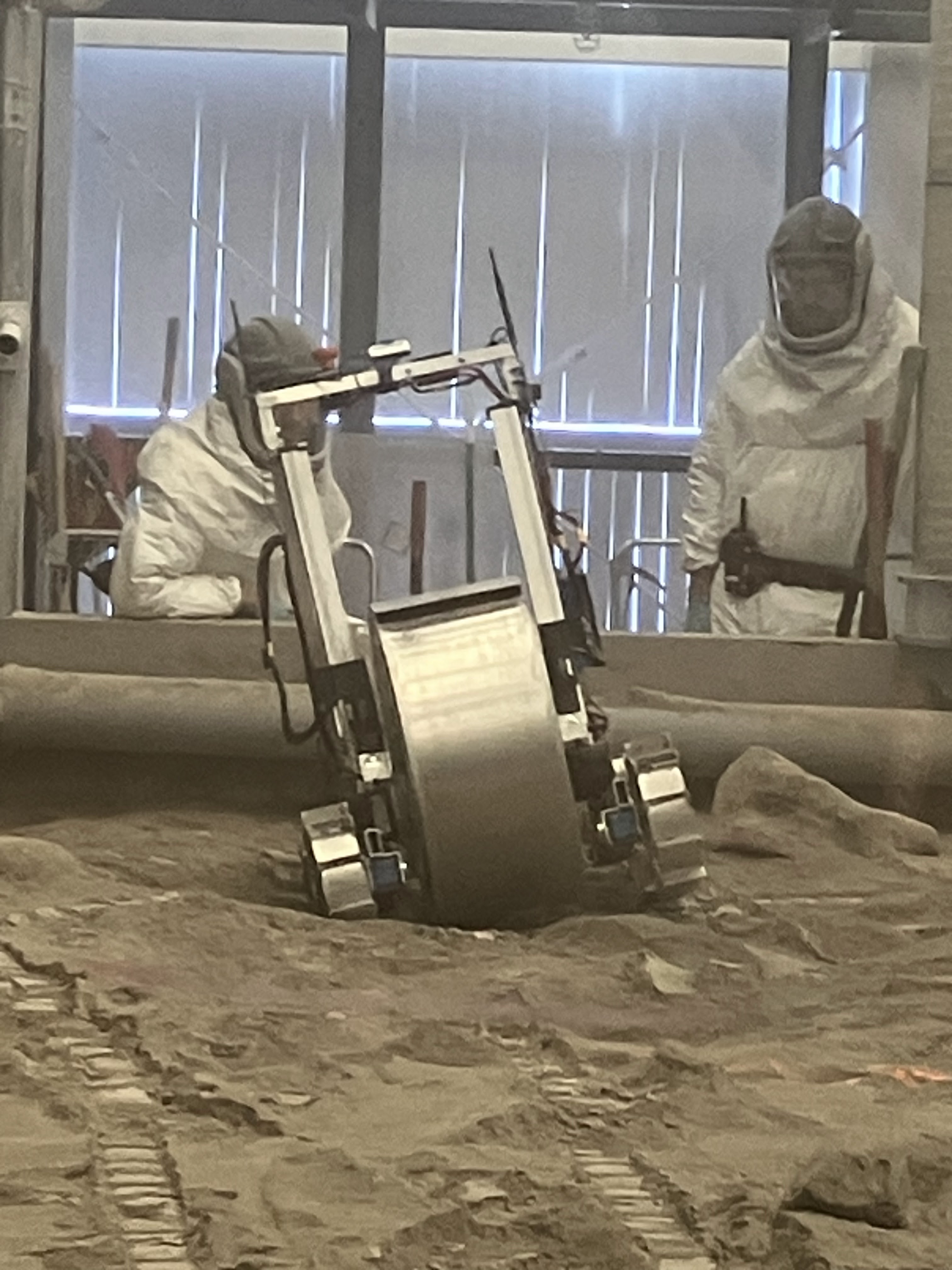
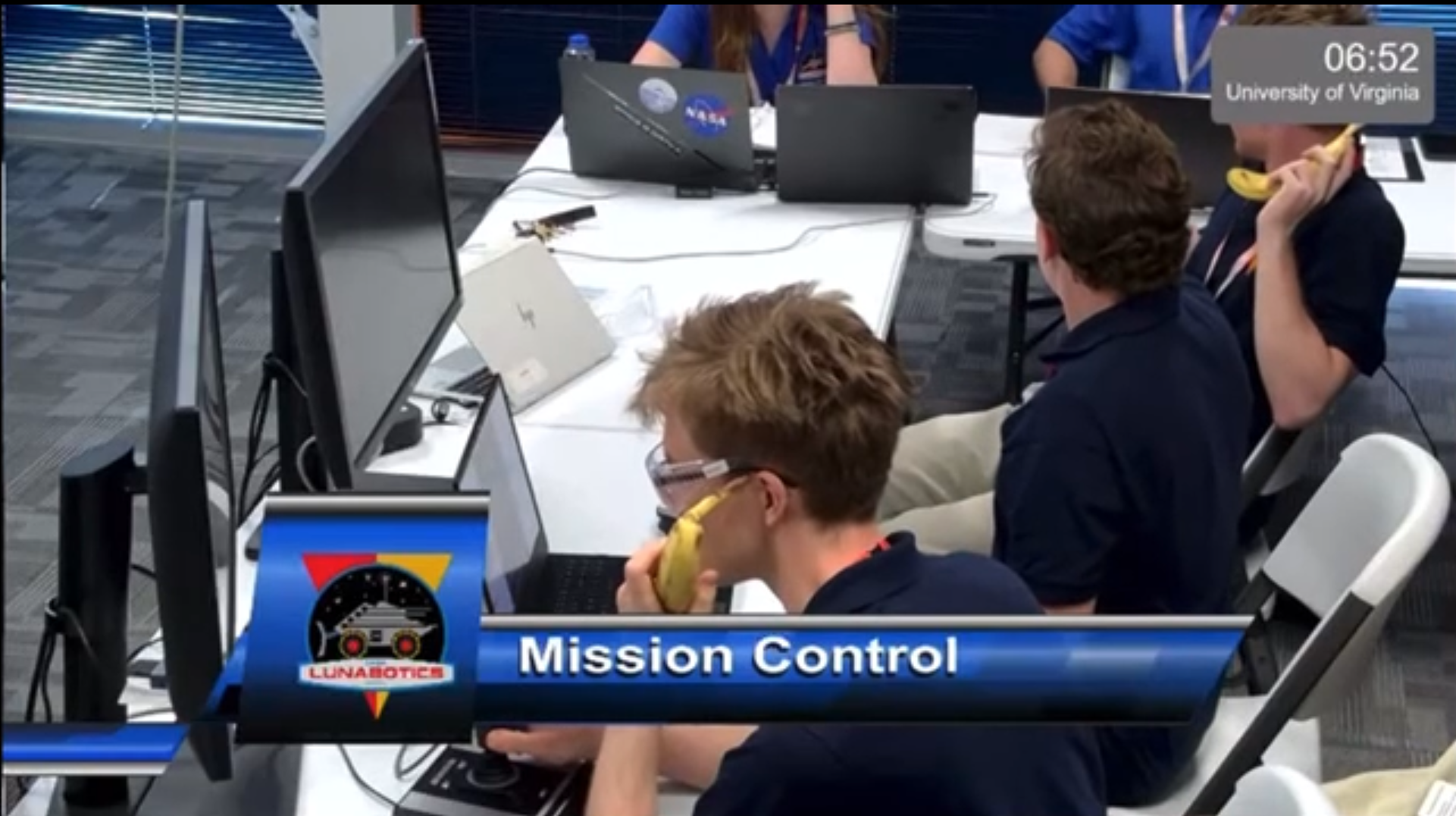
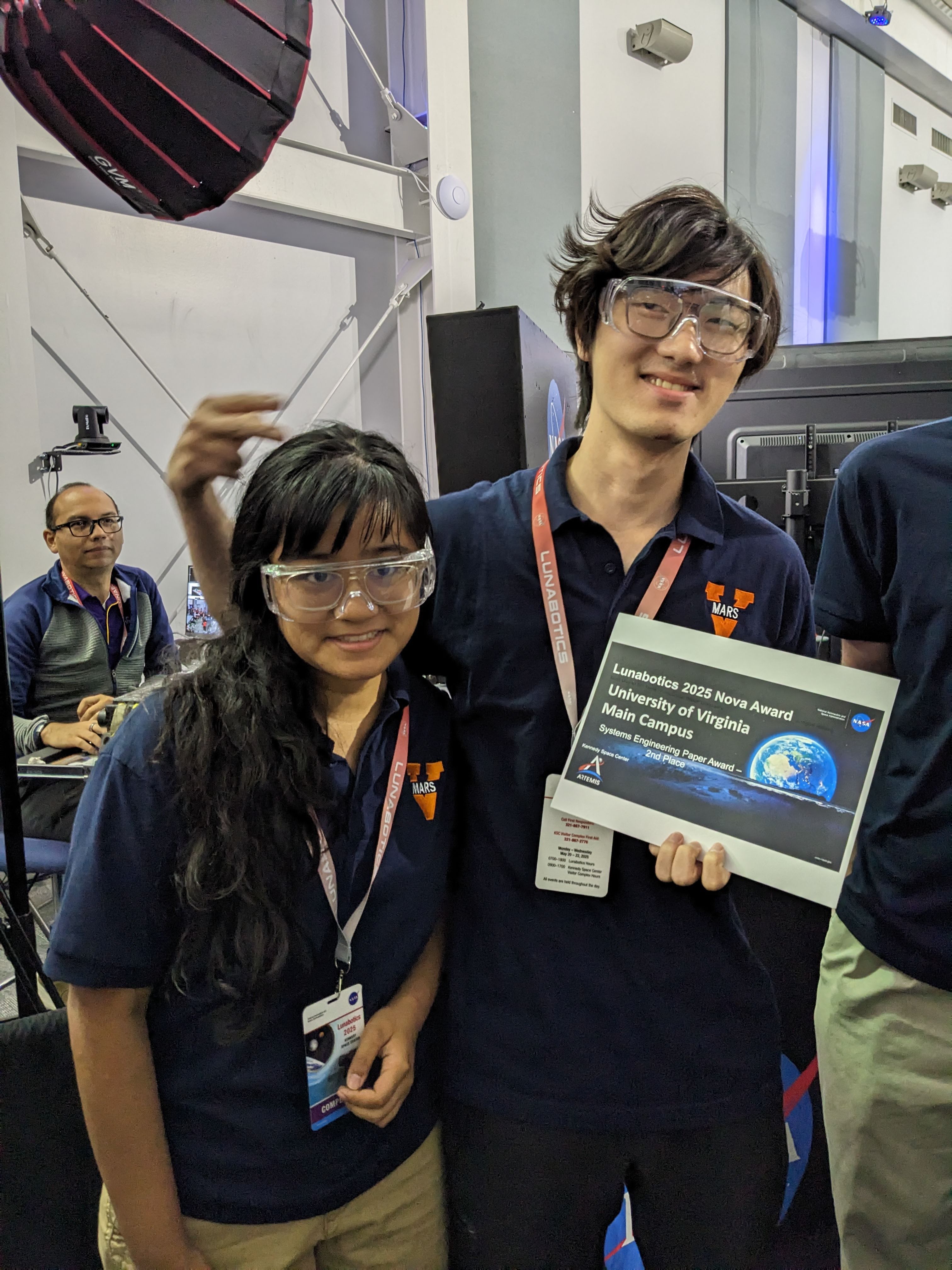
Awards (May 22)
As the last teams finished up their competition runs, we took the liberty to explore the KSC visitor complex. The rides were kinda fun.
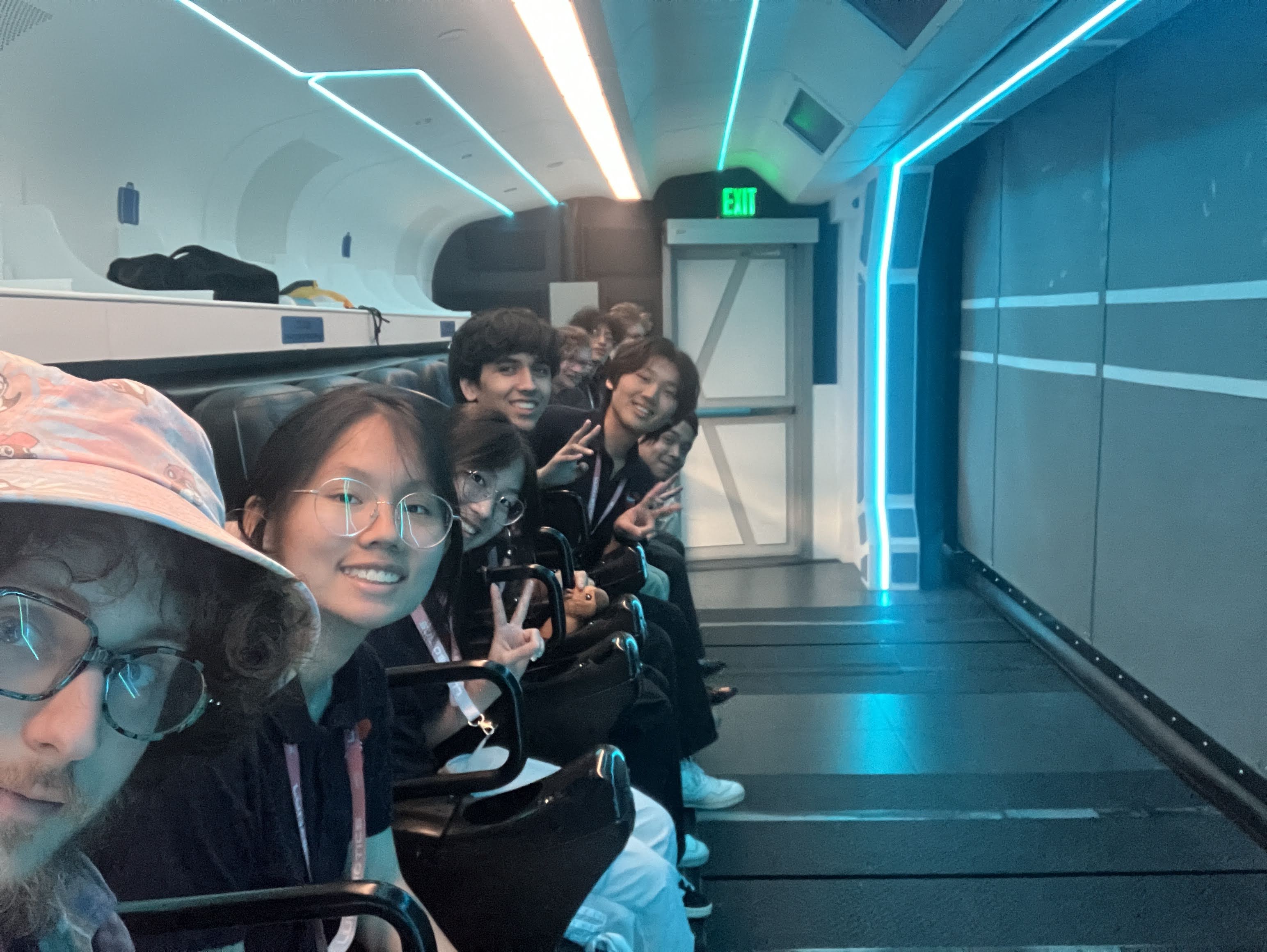
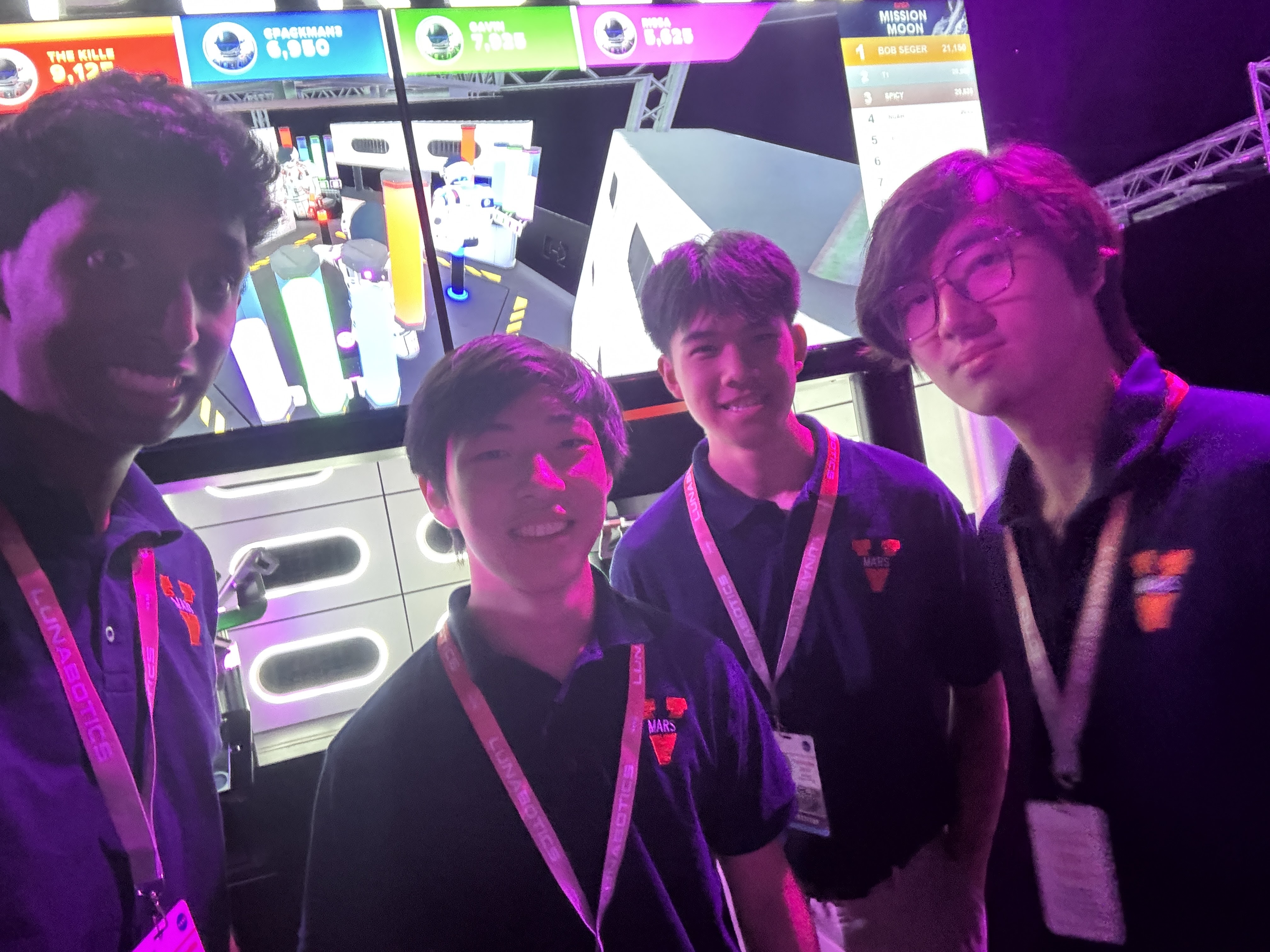
Wow, we won 5th overall! So many awards, we’re so gangster!
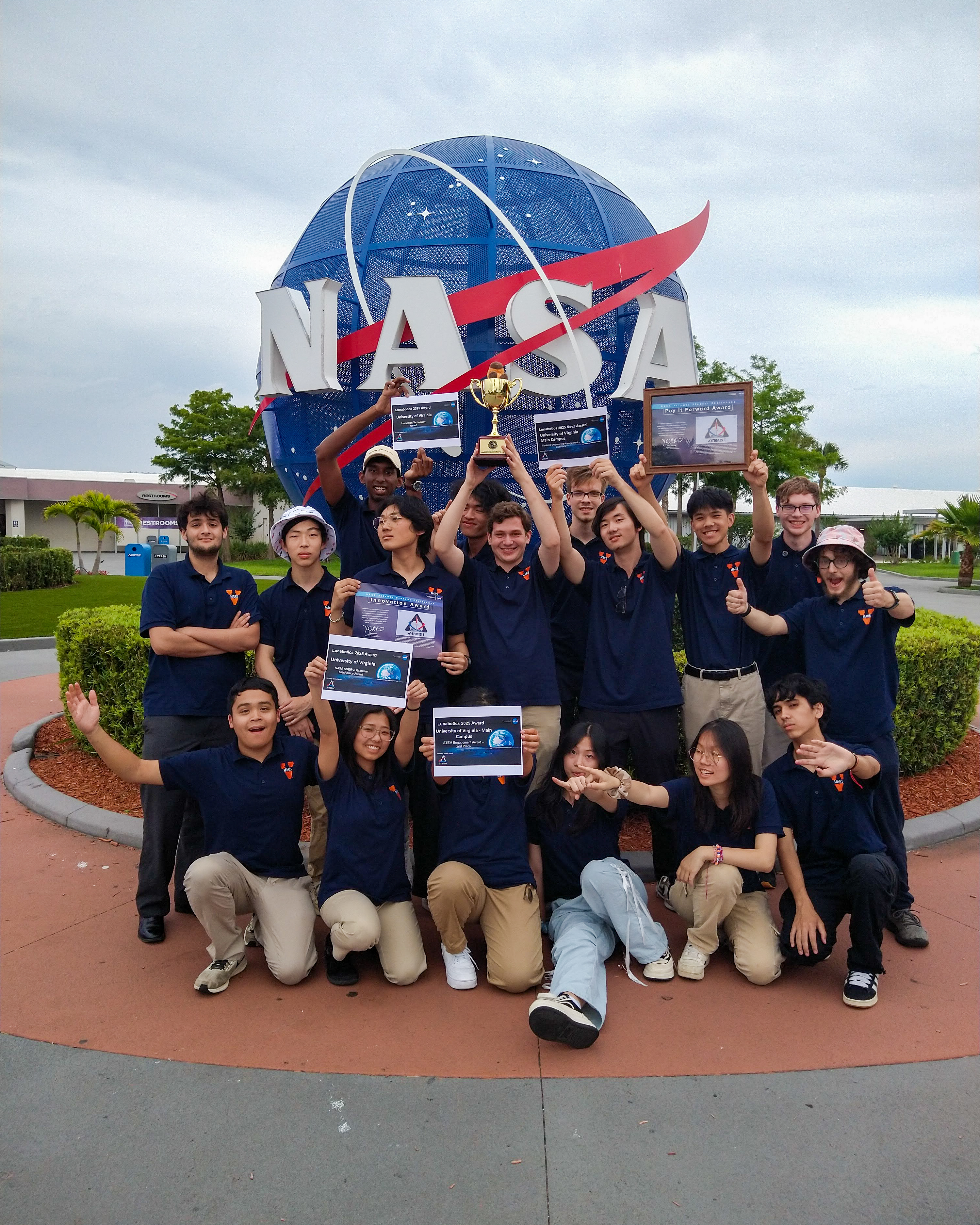
Got awards for innovation and SSERVI granular mechanics I think.
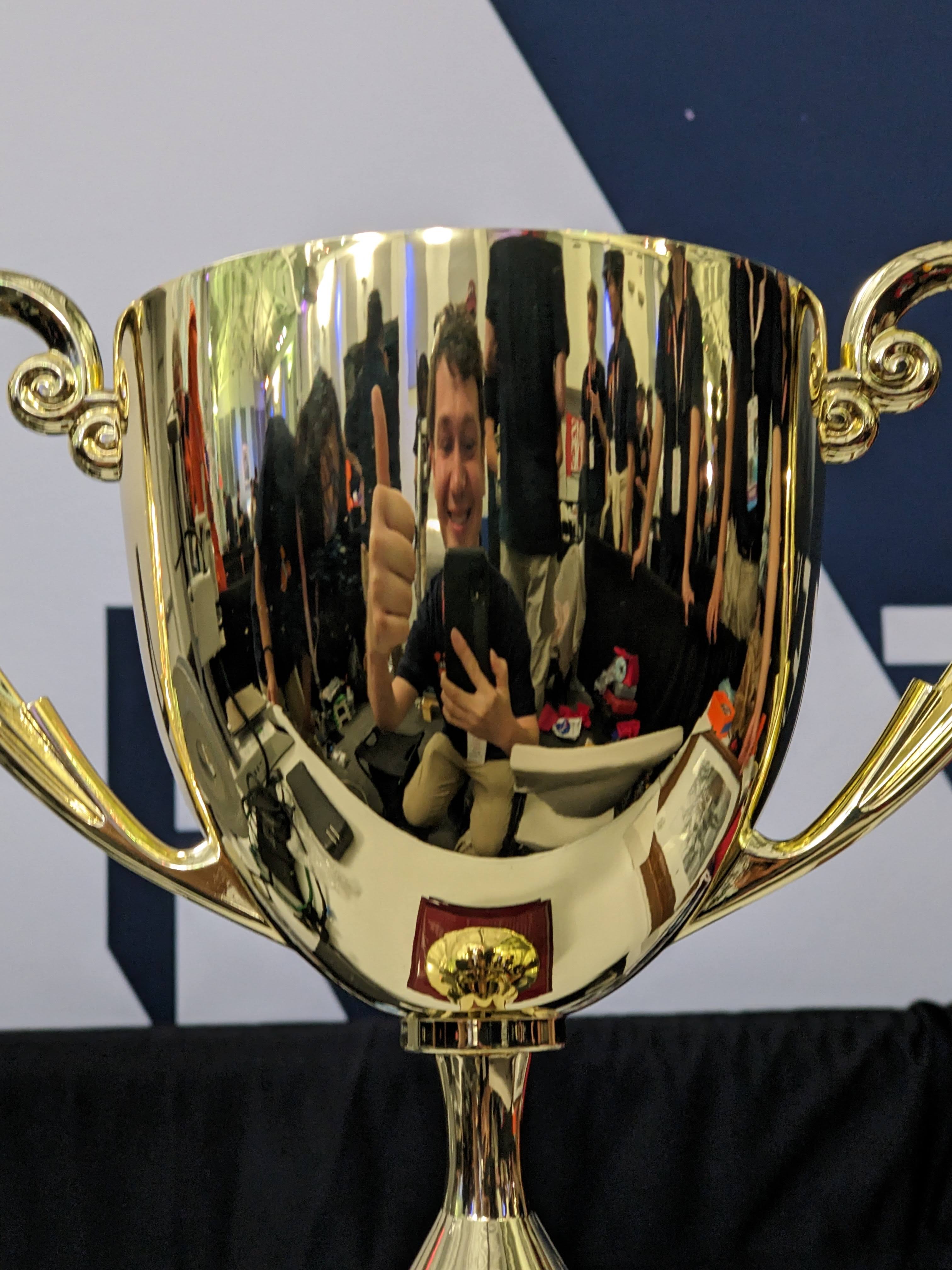
The night ended with sushi and smores for celebration.

Chris Lim bought firecrackers.
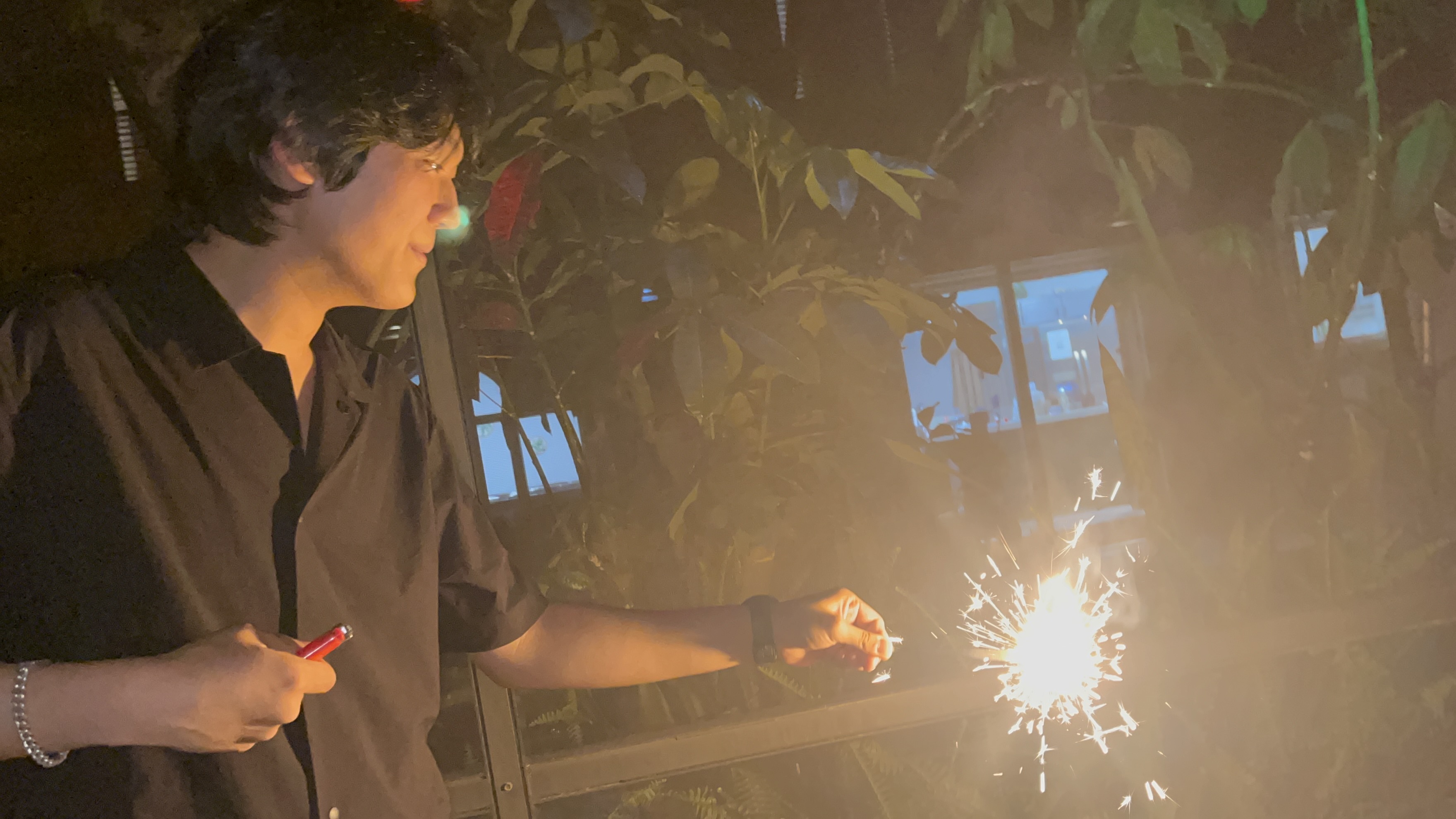
We made thank-you cards for our graduating 4th years (Swedha, JP, Surya, Hao, Ben, Cayla). Some of them are now employed, and some still in school. We hope they’ll all get a job 🙏
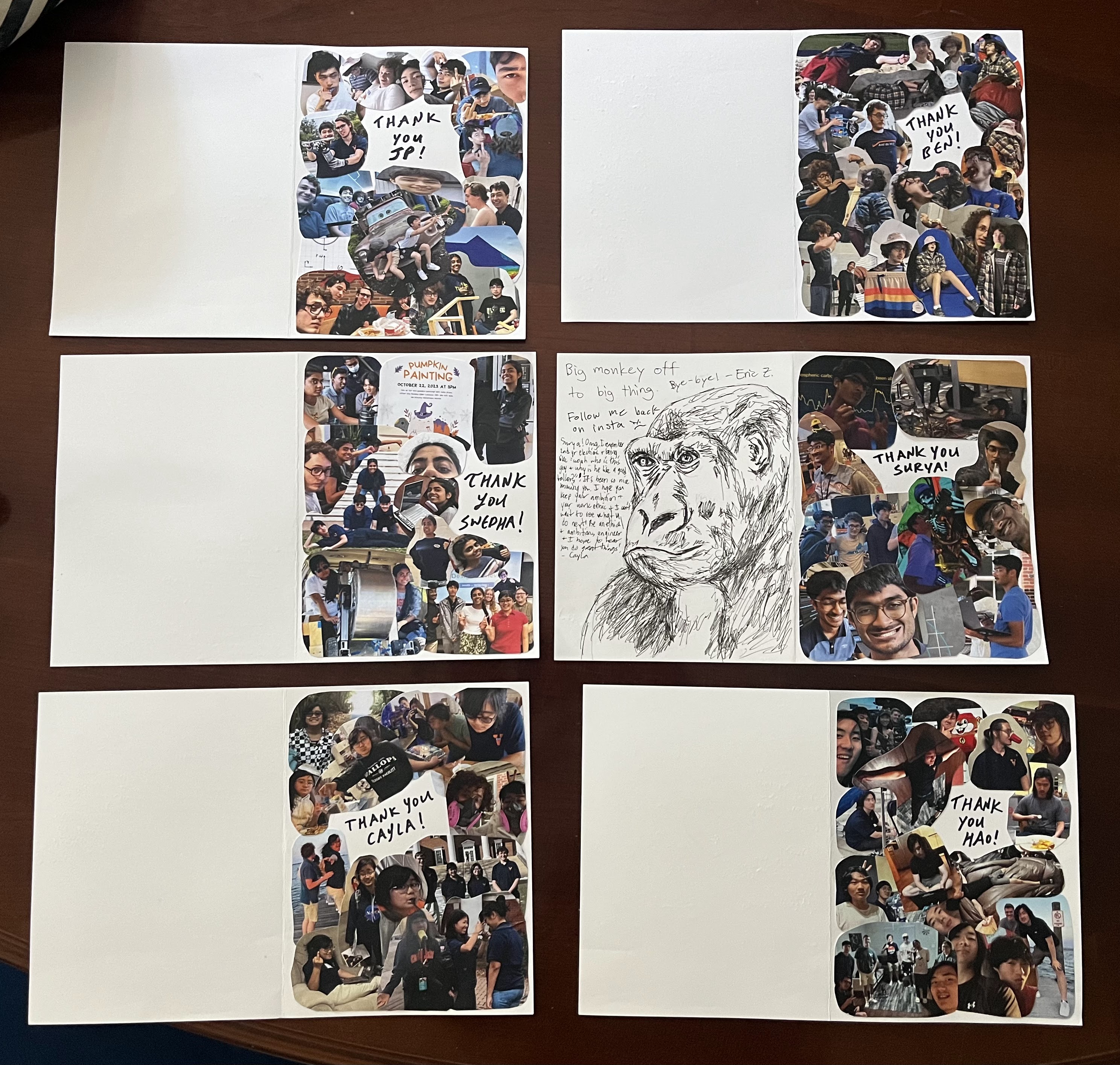

Departure again (May 23)
Craig stayed in Florida because he’s a NASA Pathways Intern! Wow, he’s so cool!
There was a small crack in the wall.
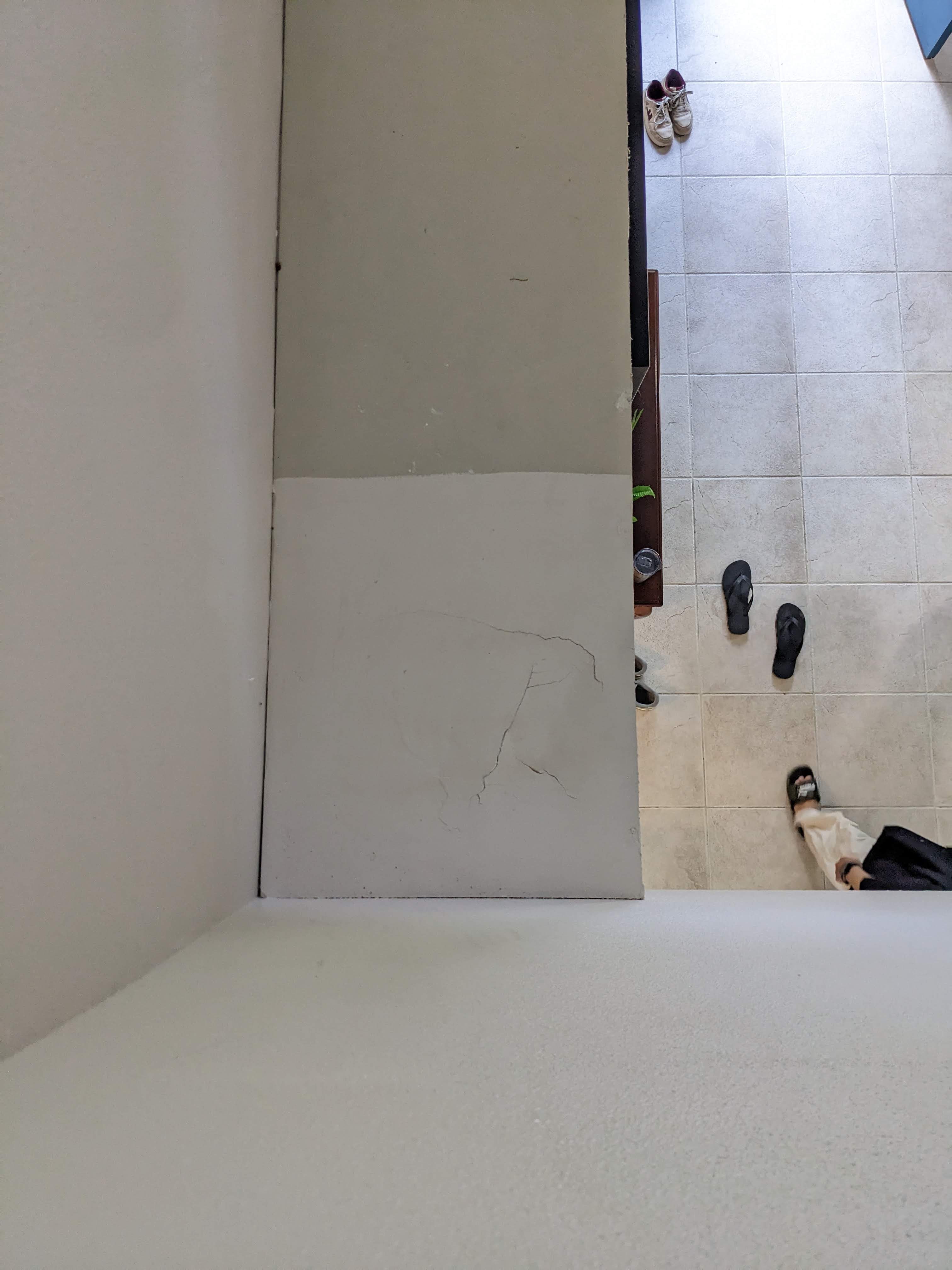
The team enjoyed a late-night meal at Waffle House in Charlottesville before splitting off for the summer. Some homeless individuals decided to sleep at Lacy again.
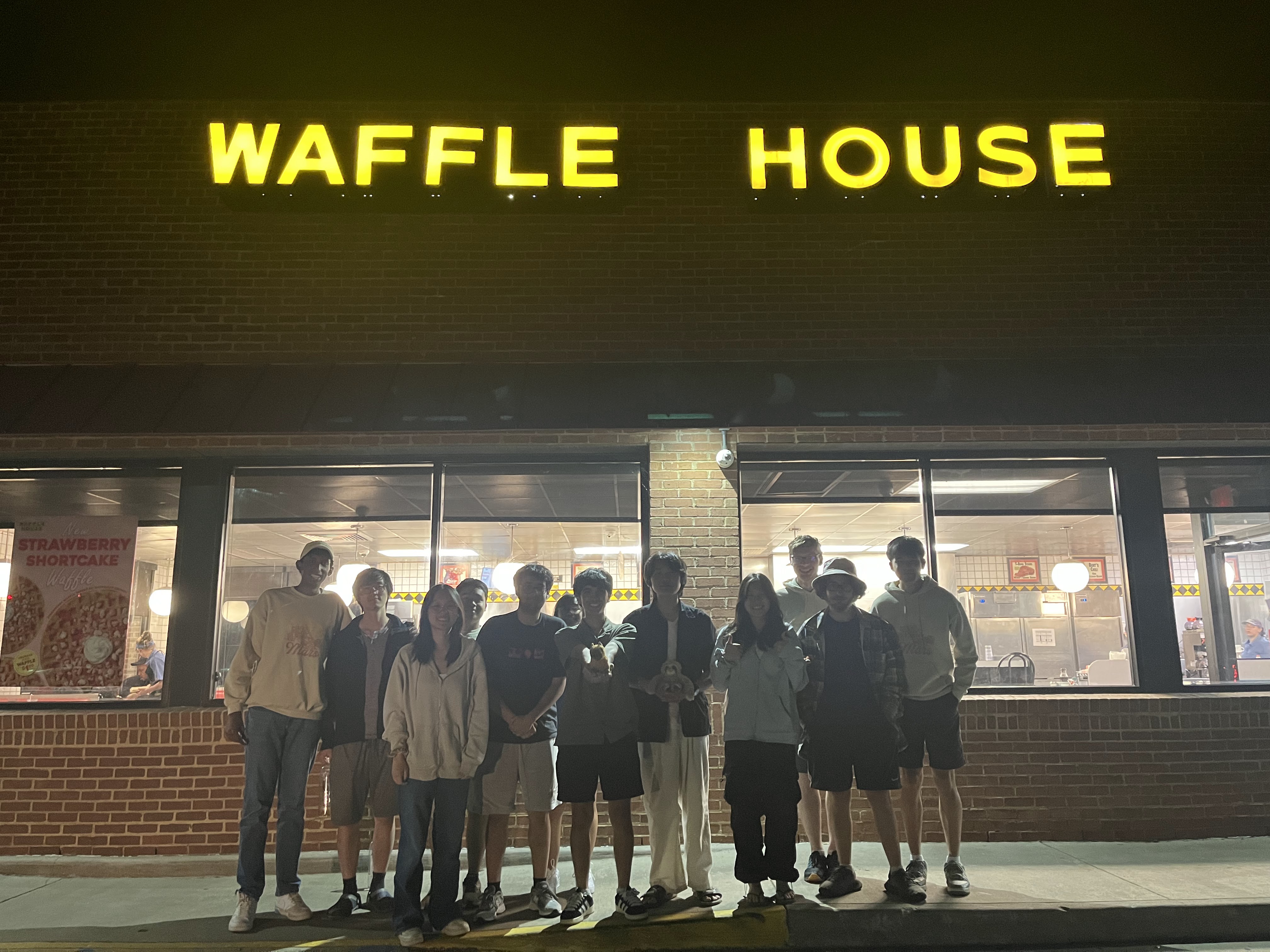
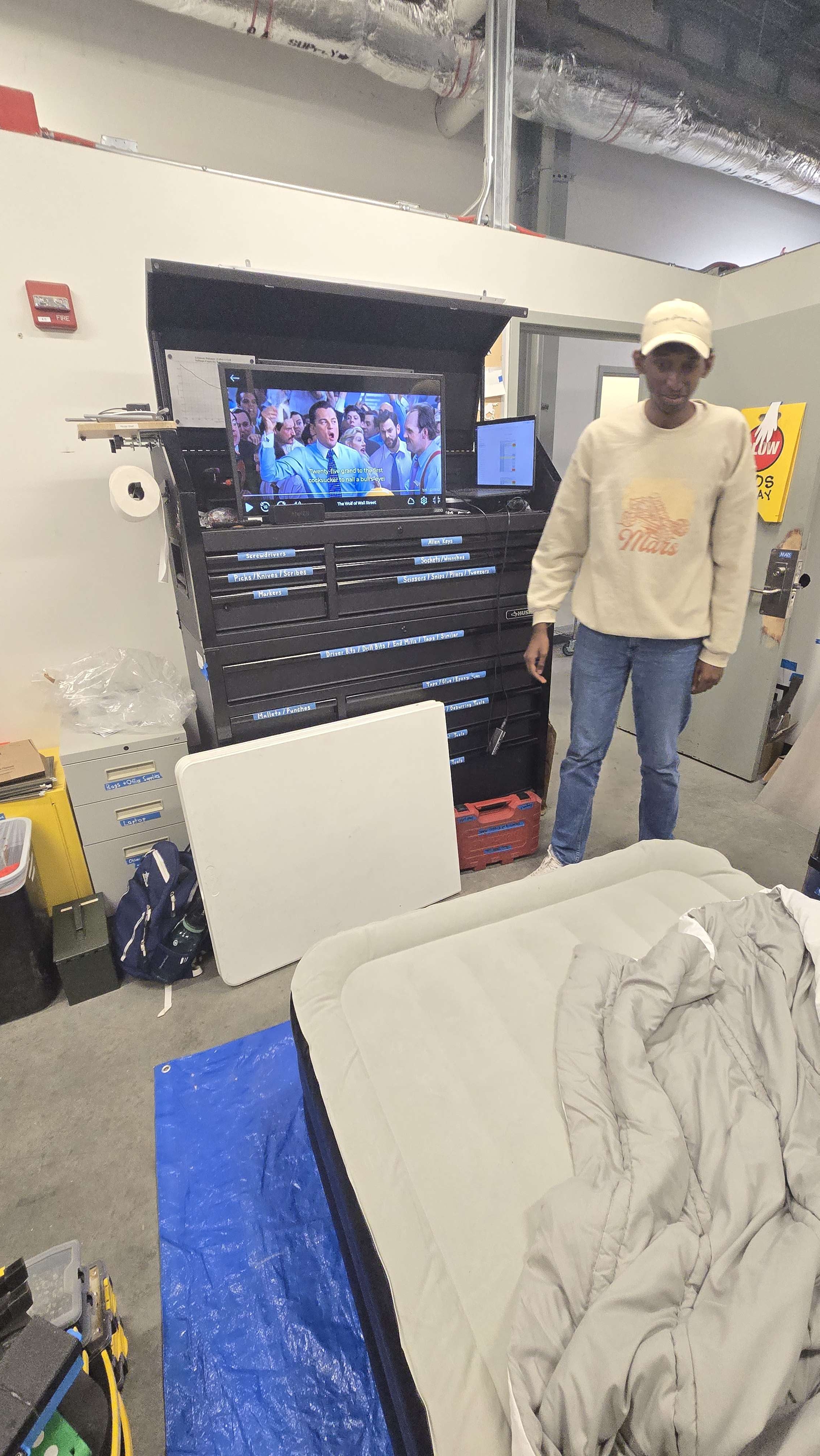
Finally, we would like to thank Katseye, for making their iconic song, Gnarly.

